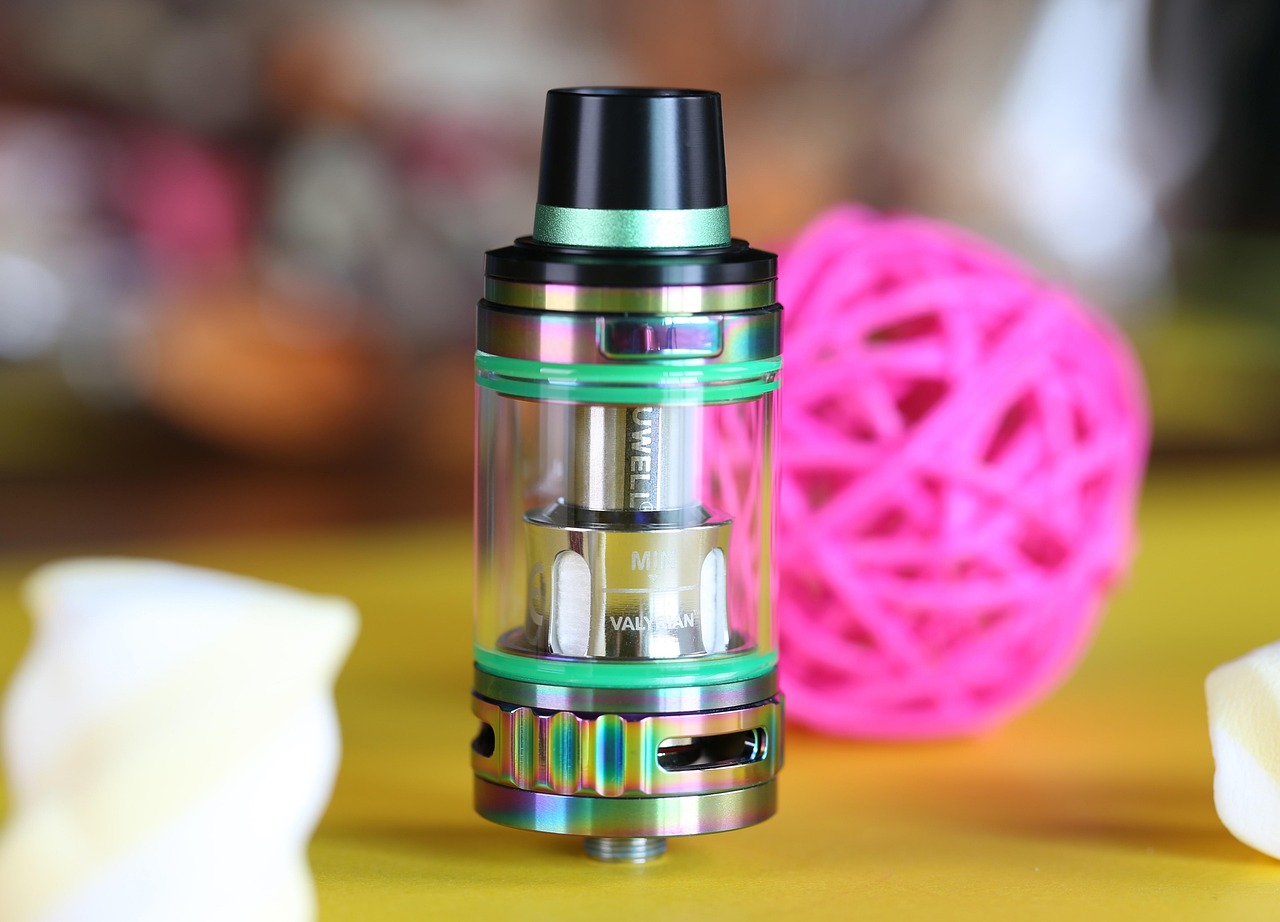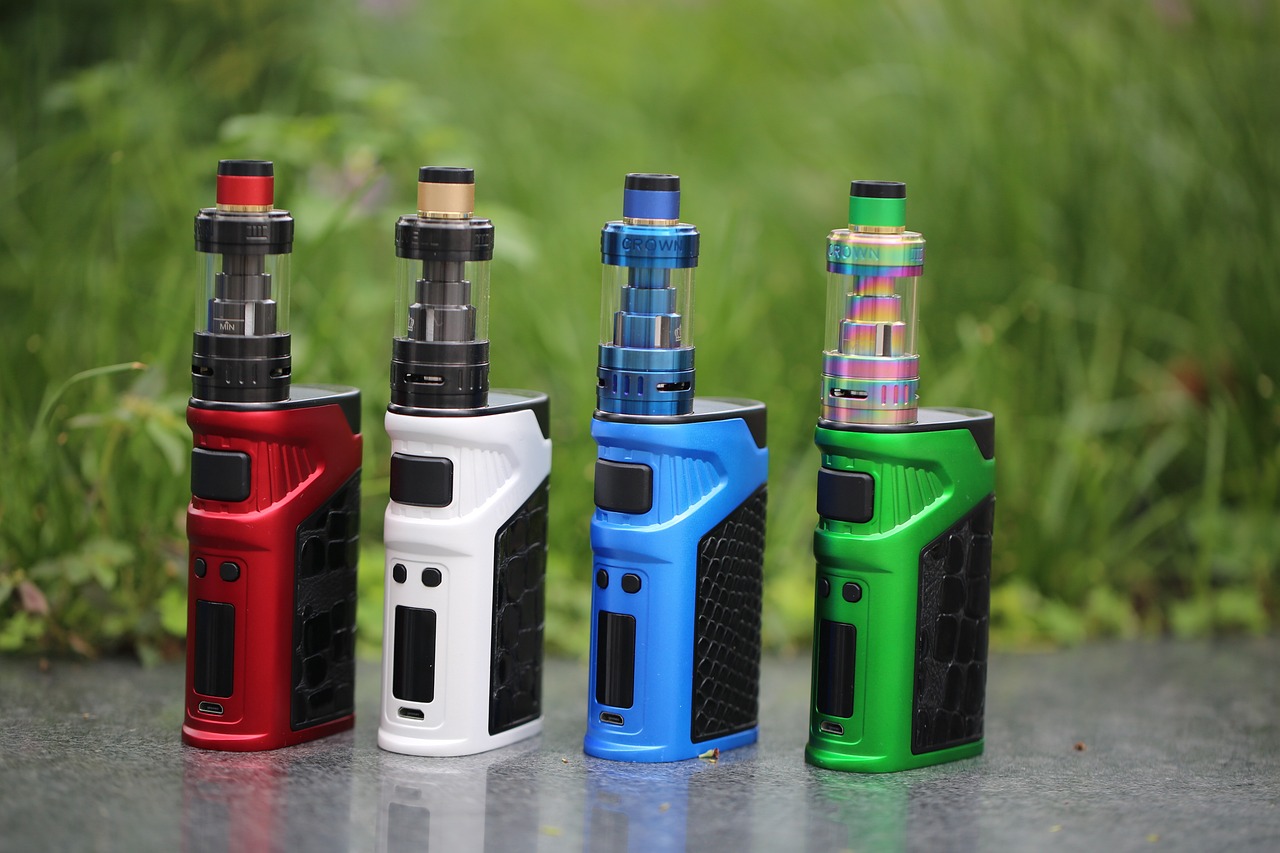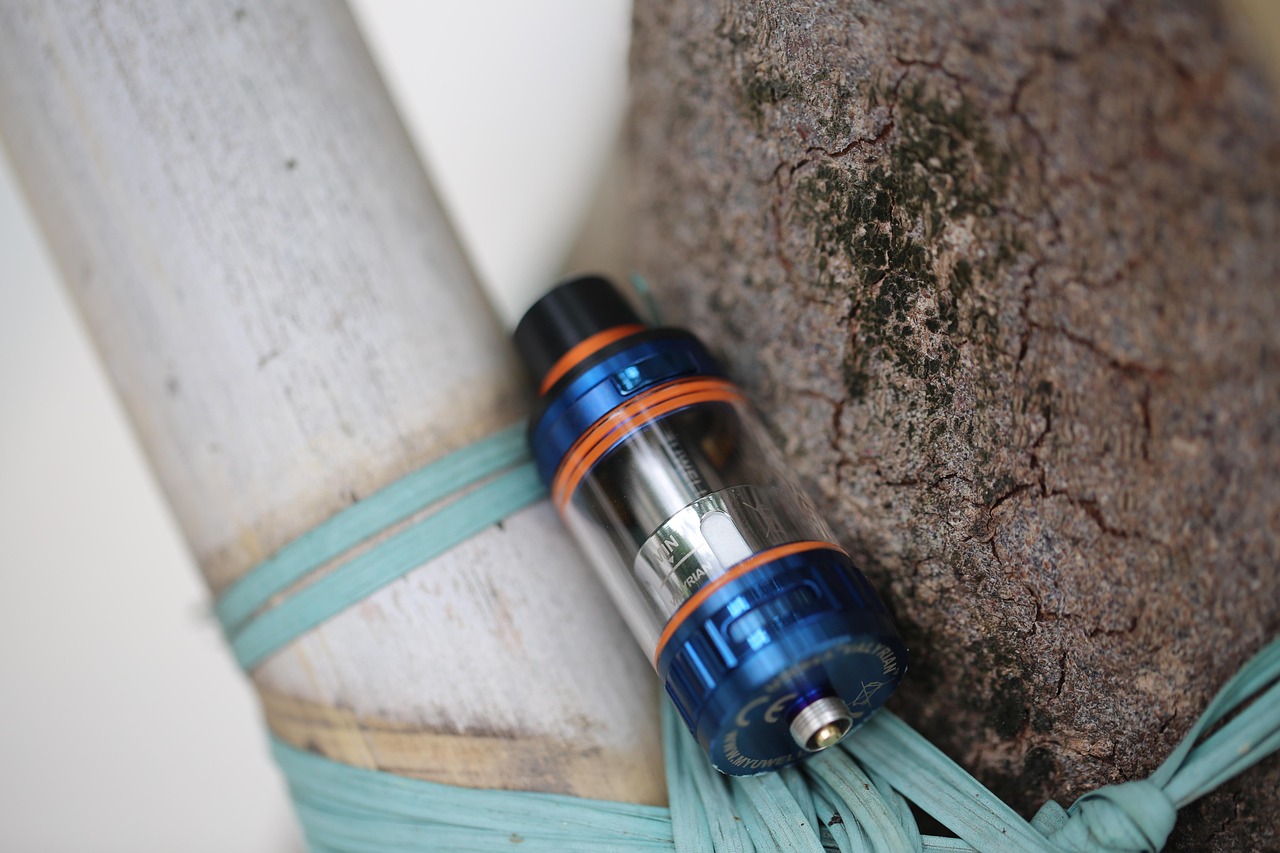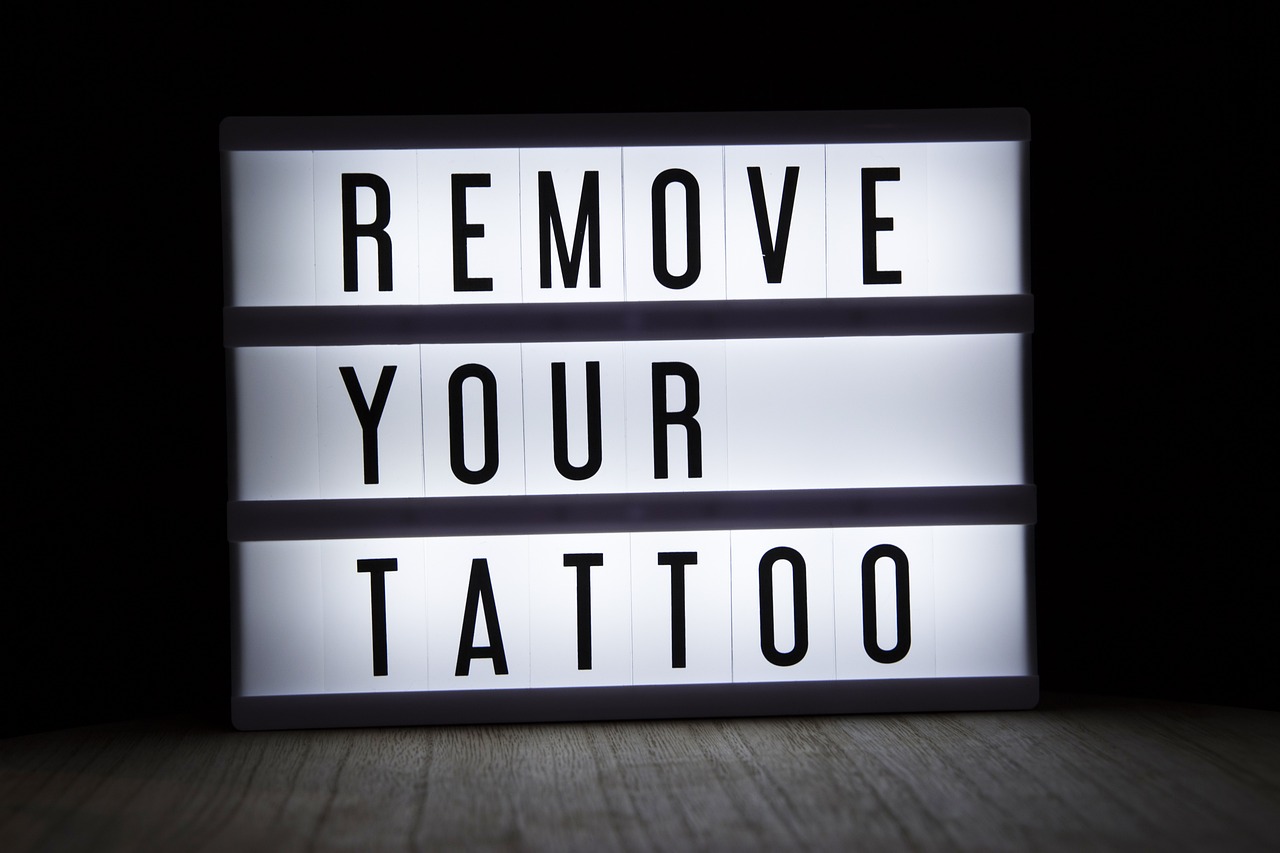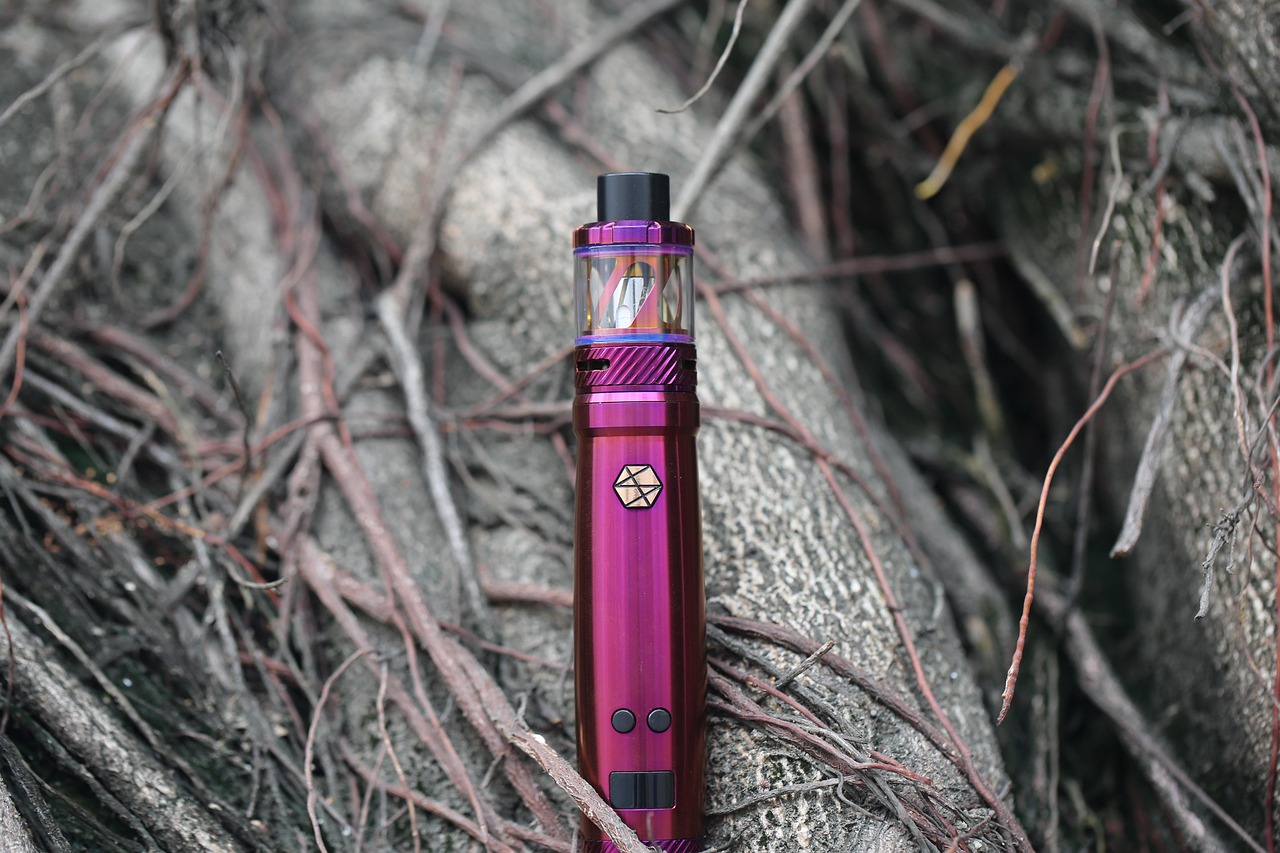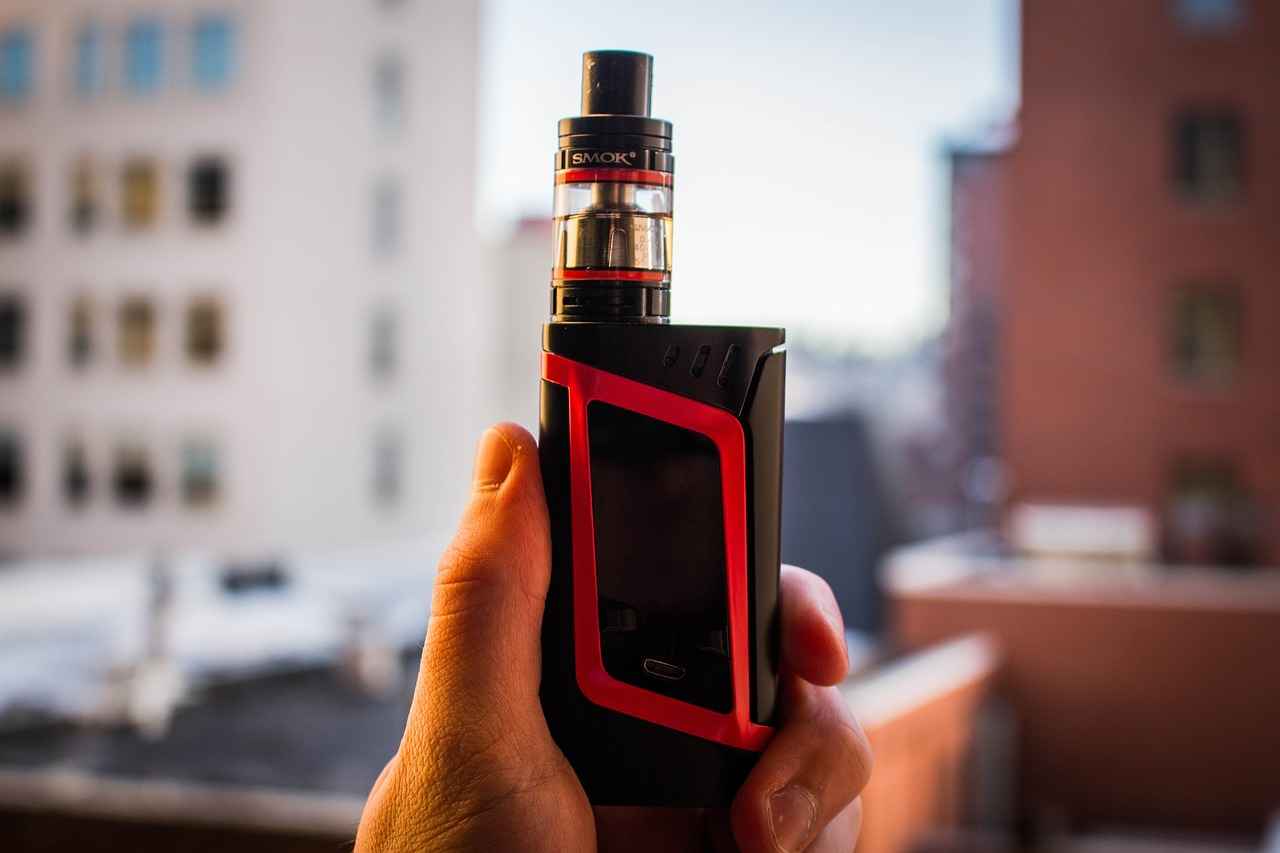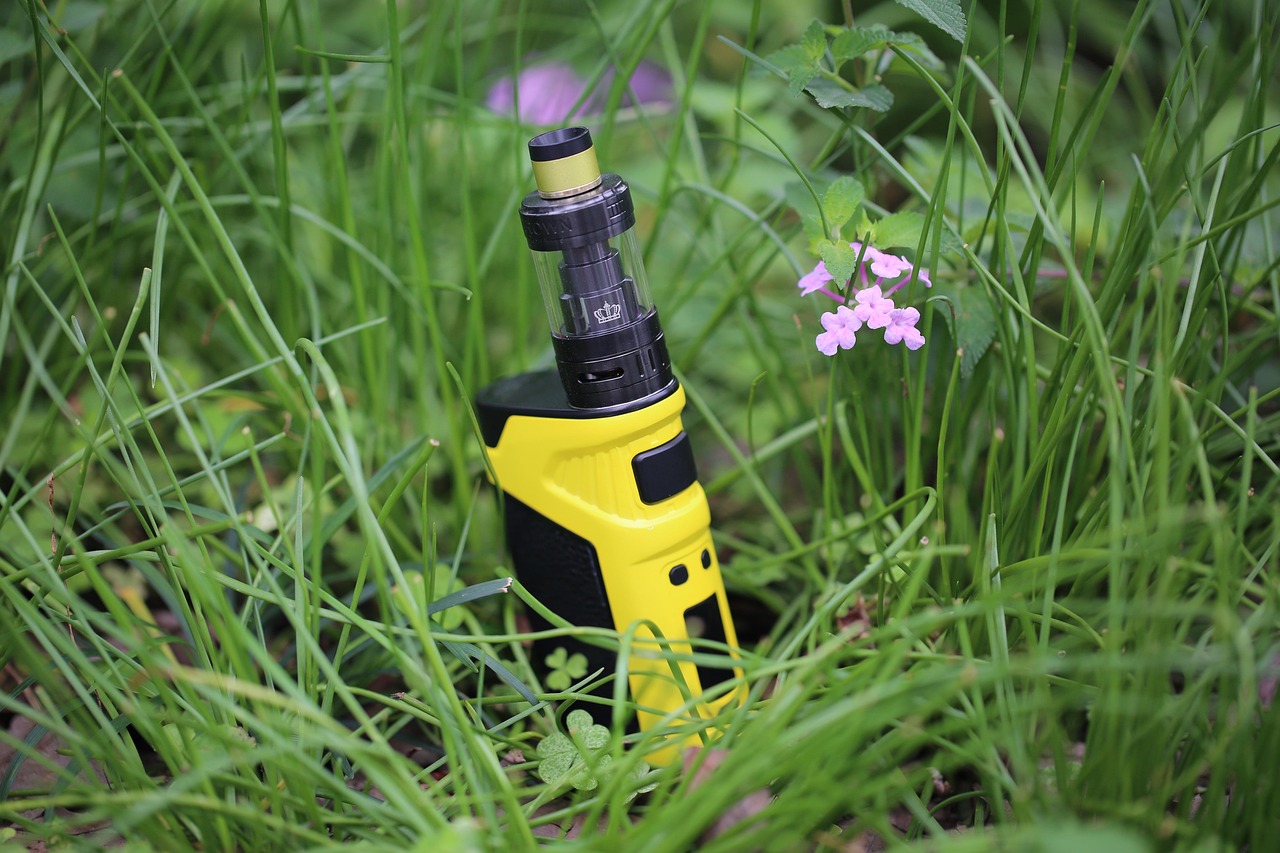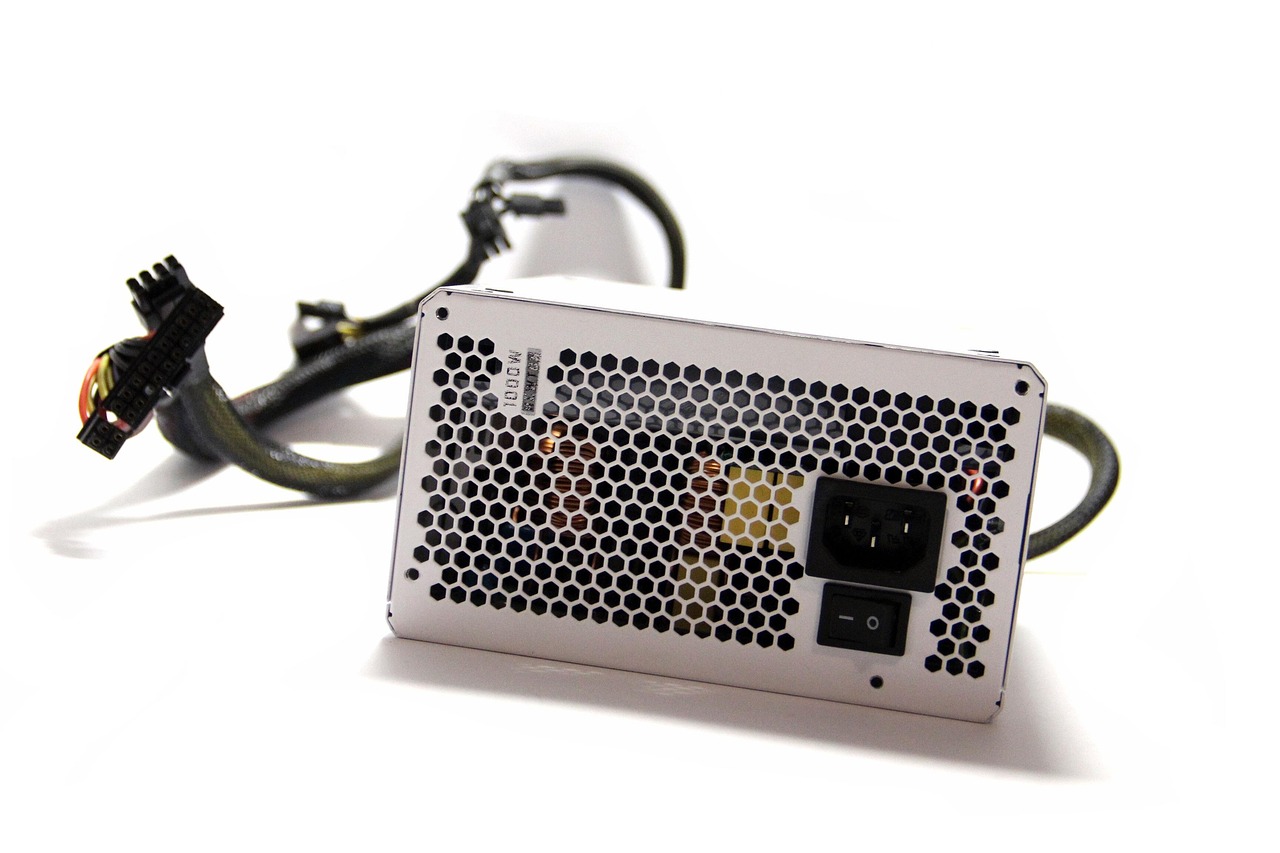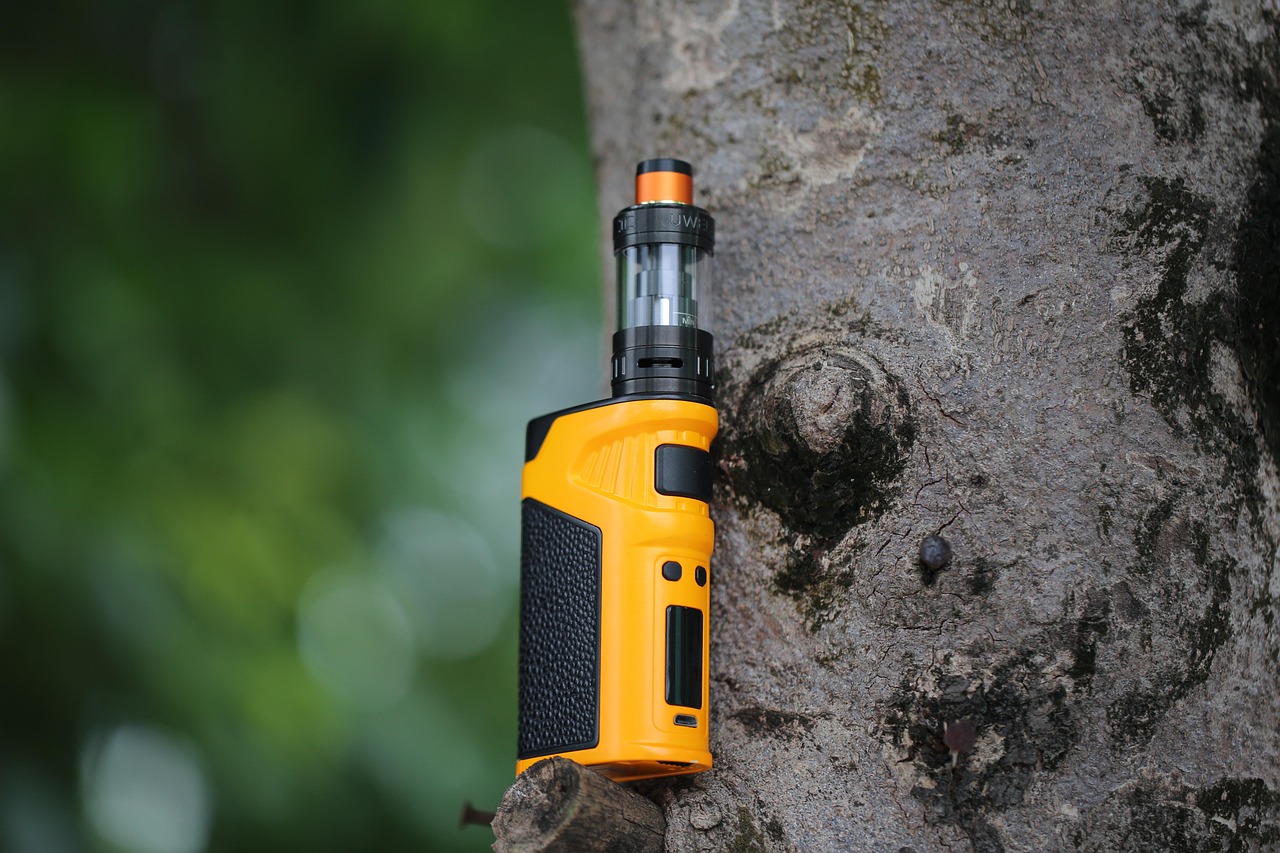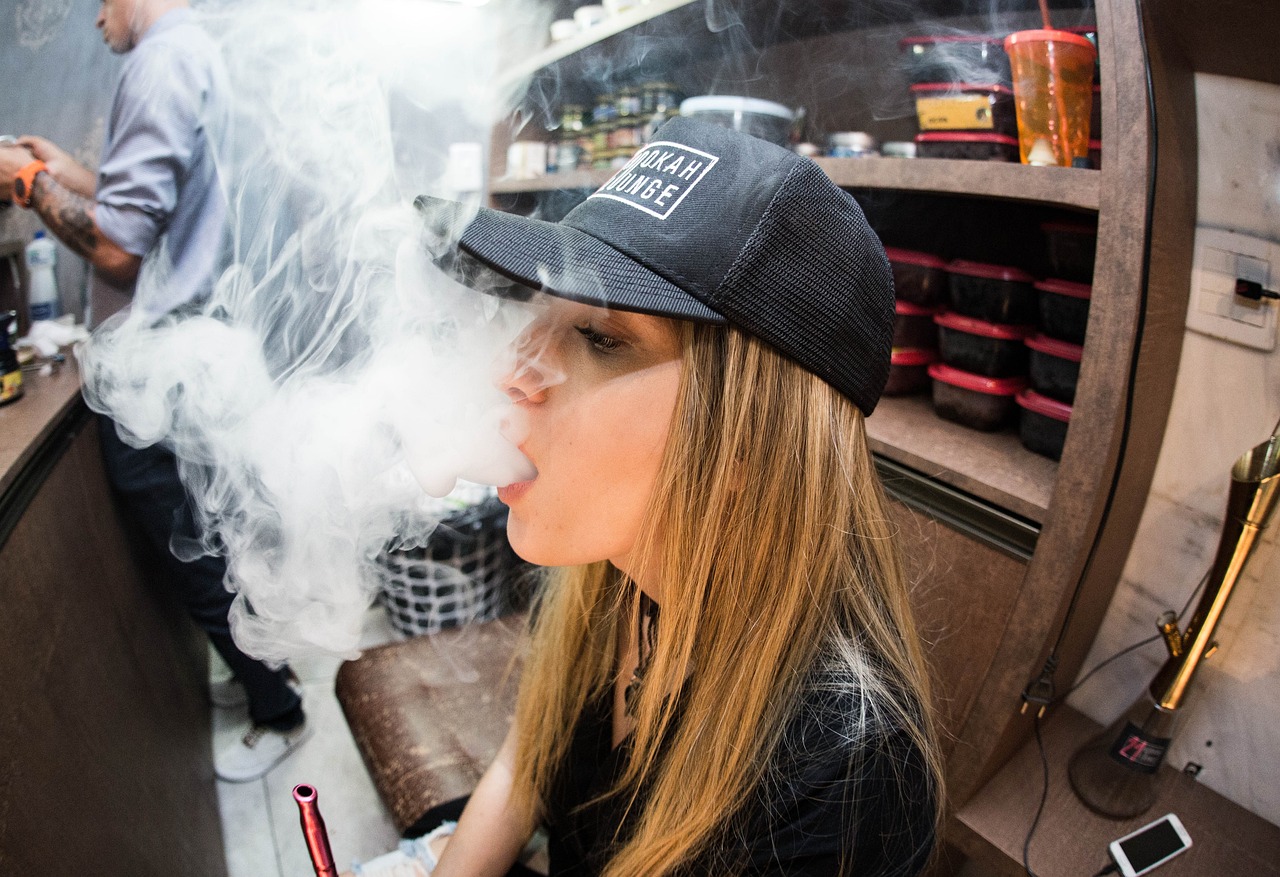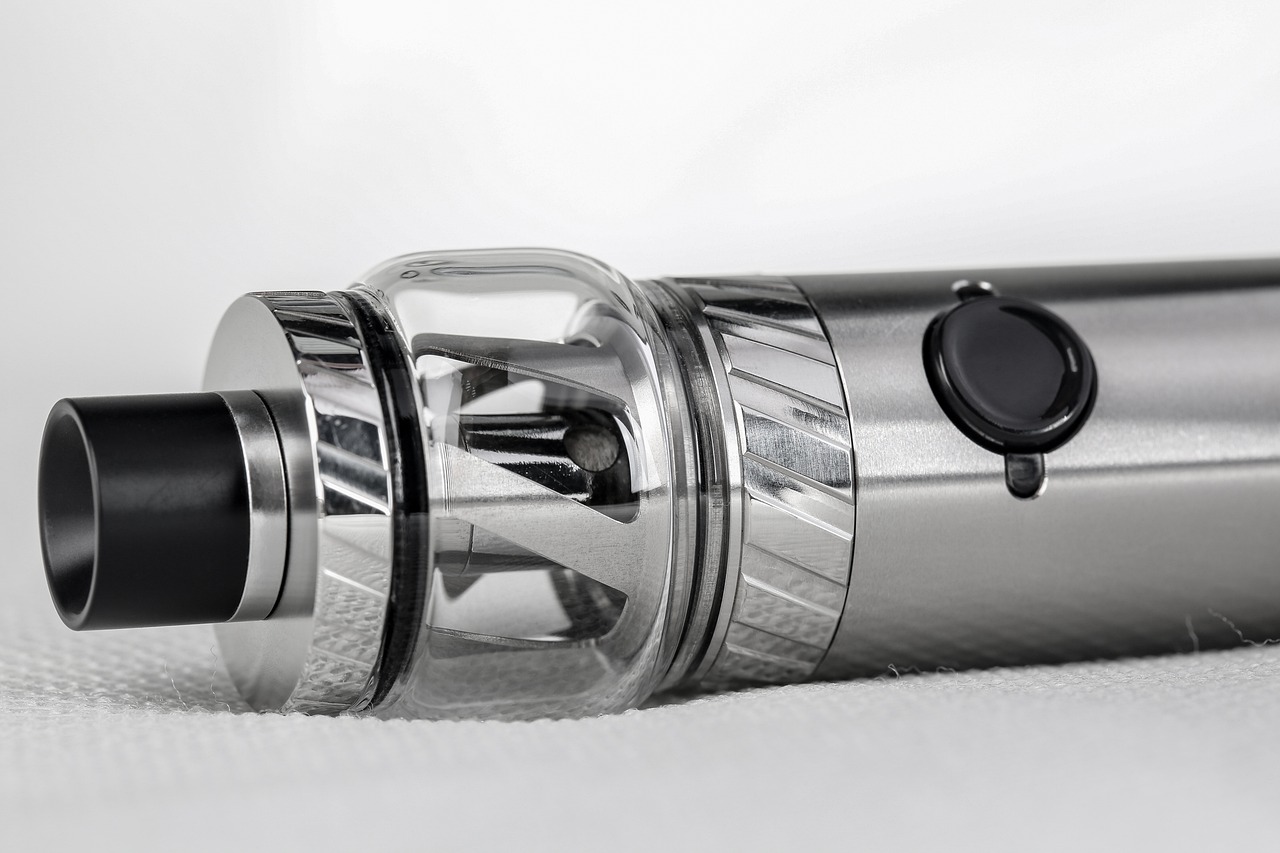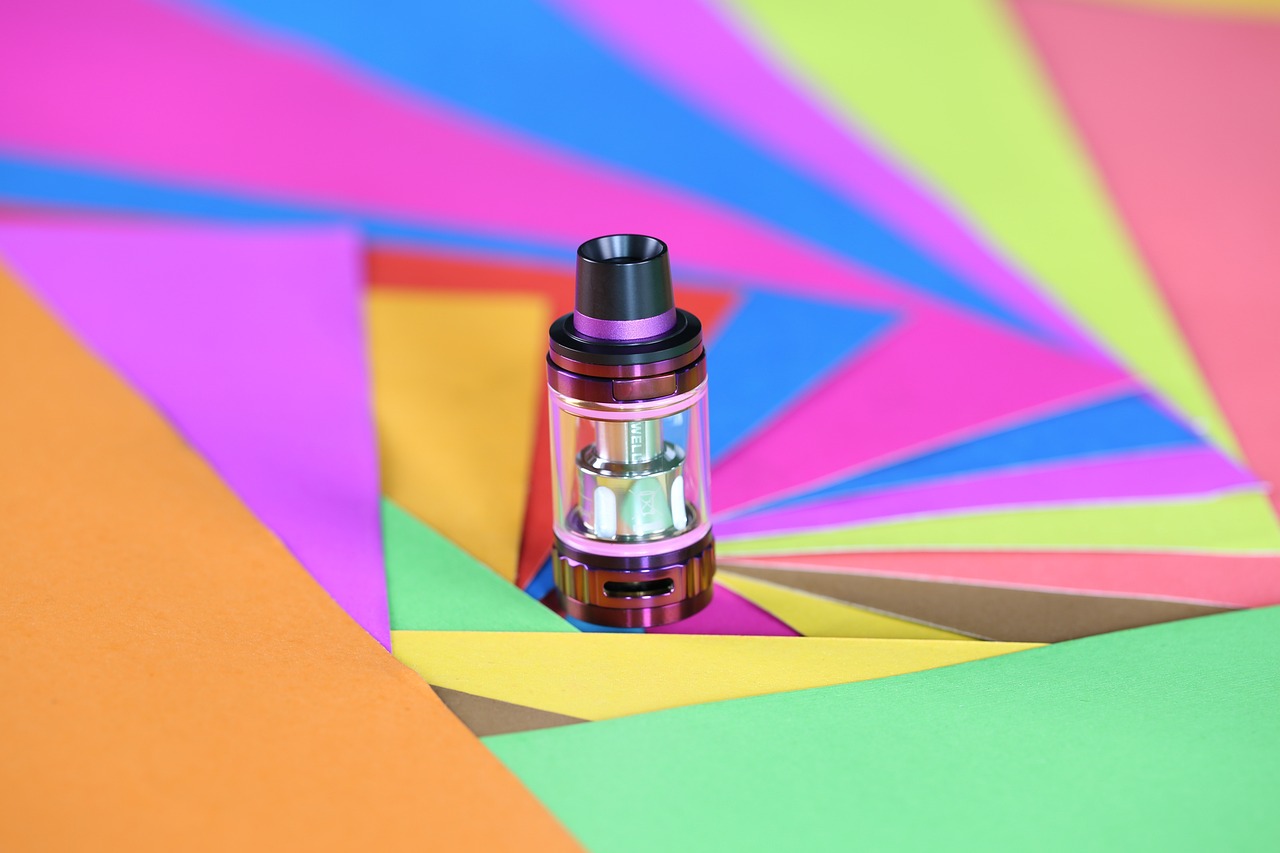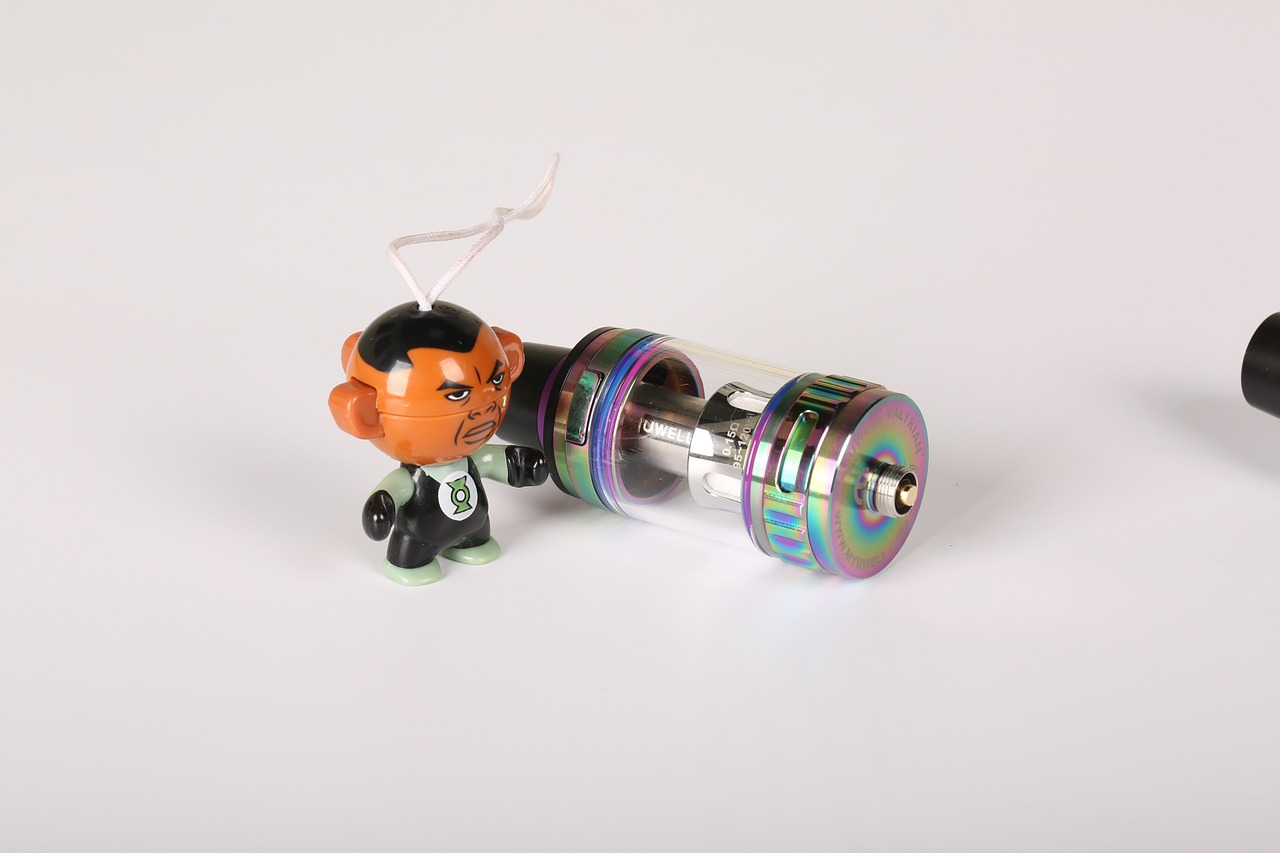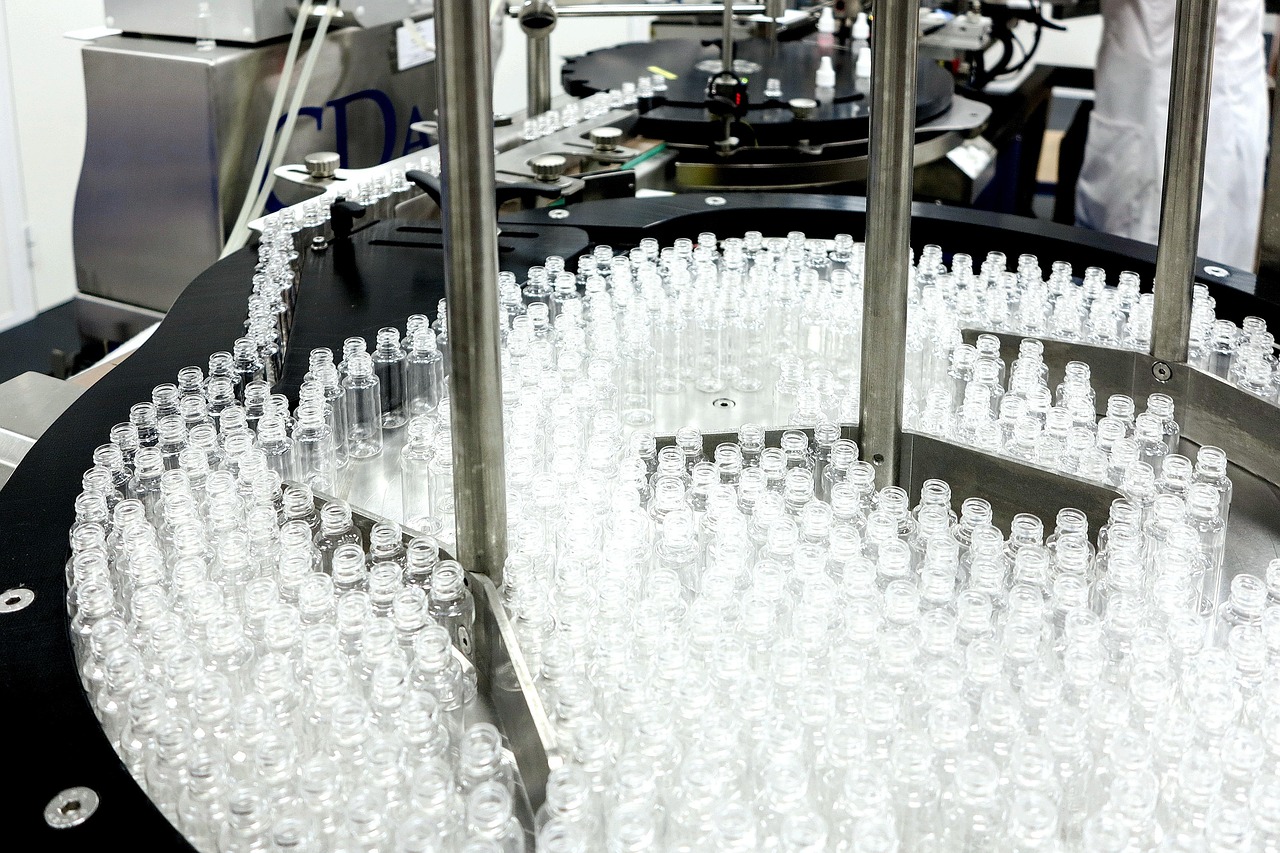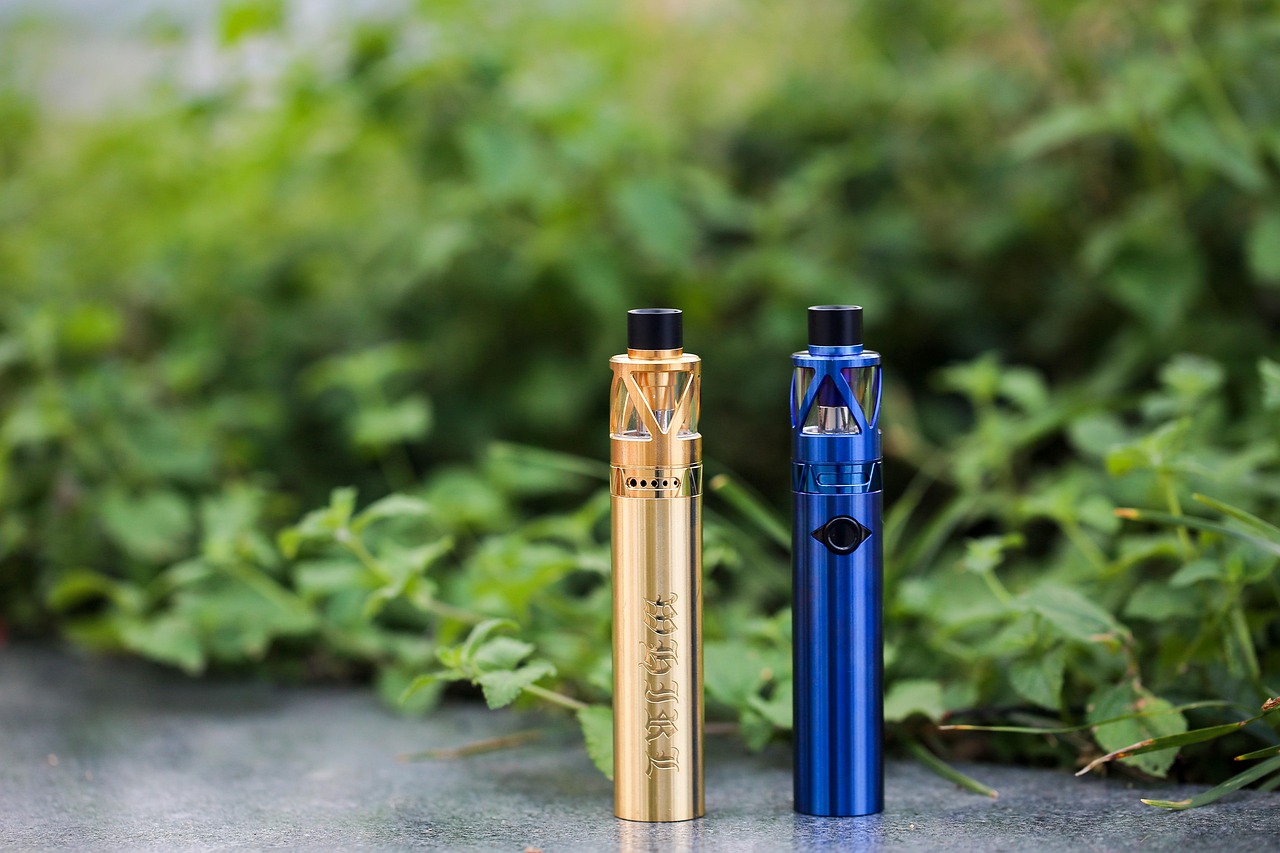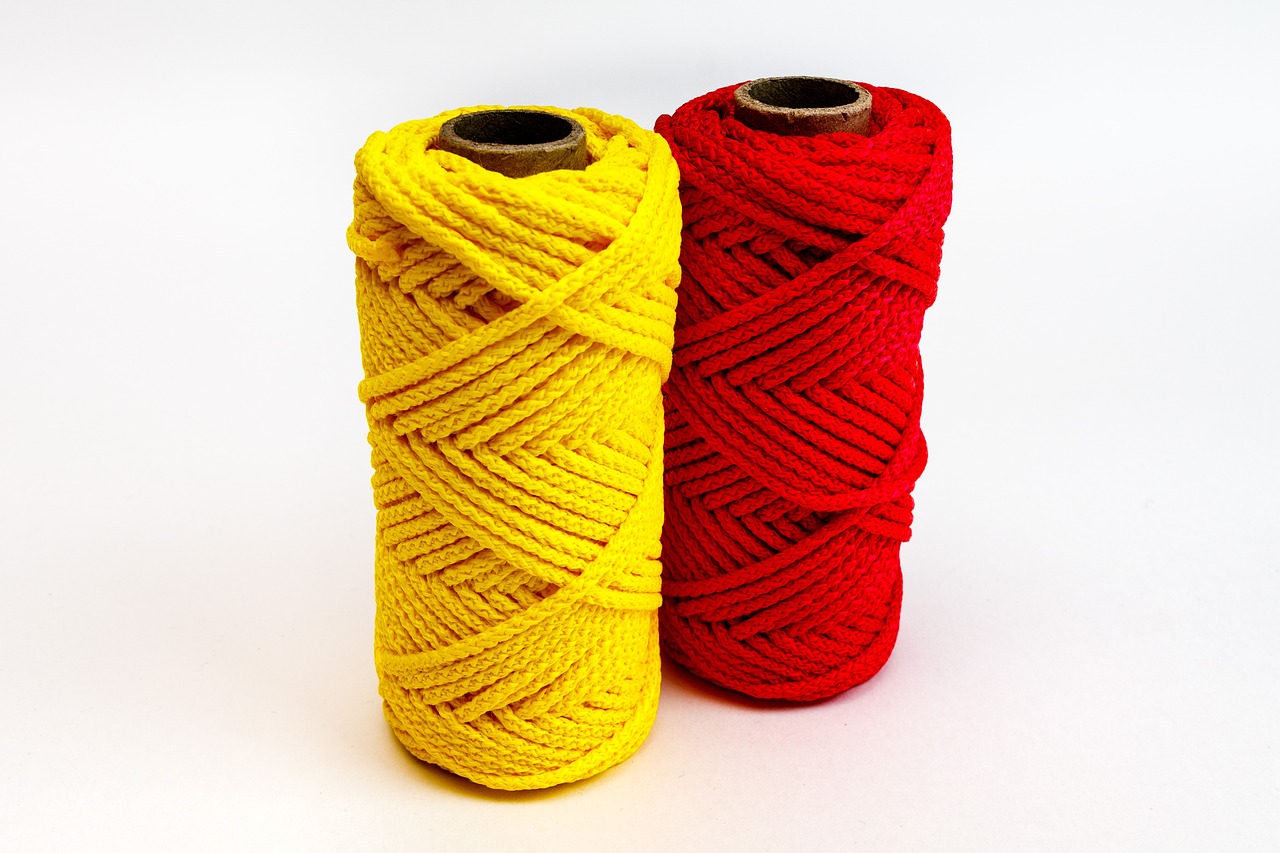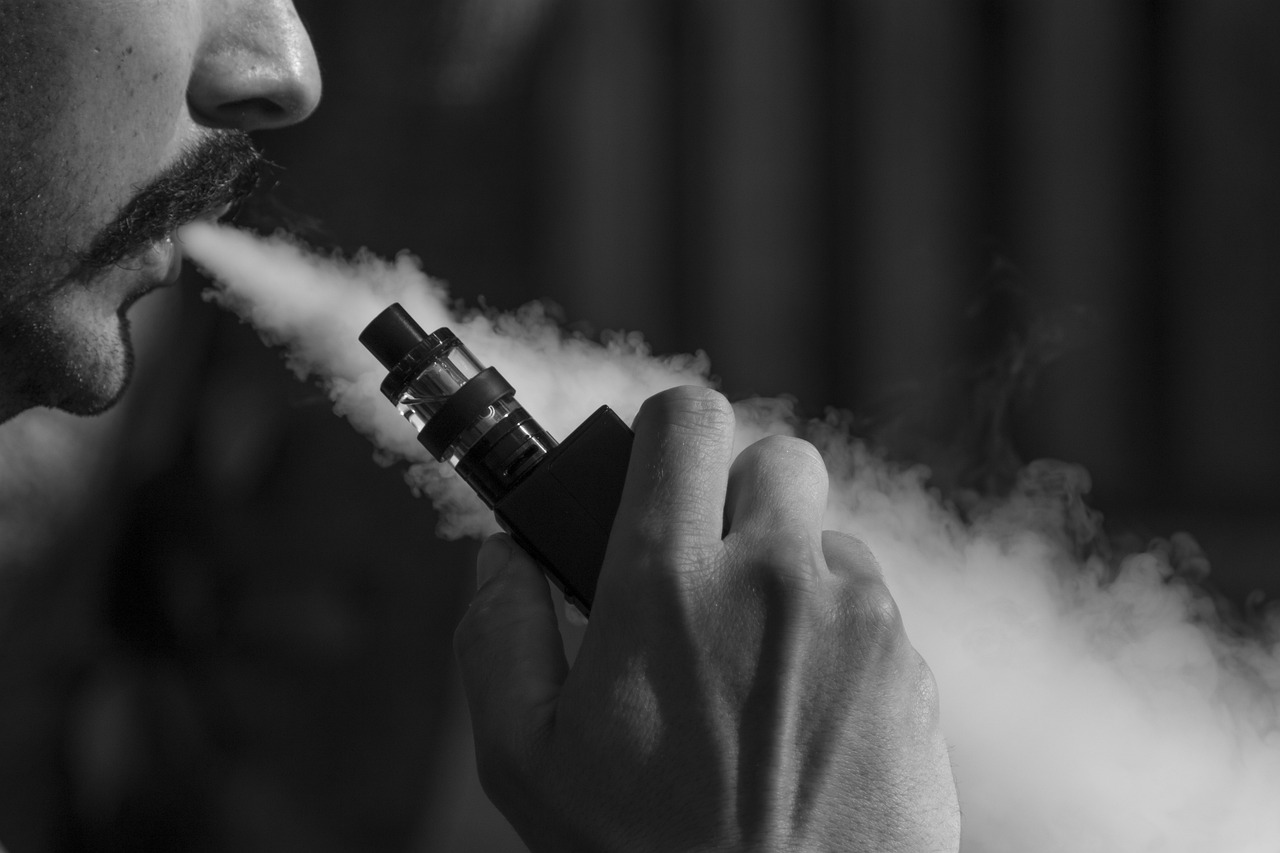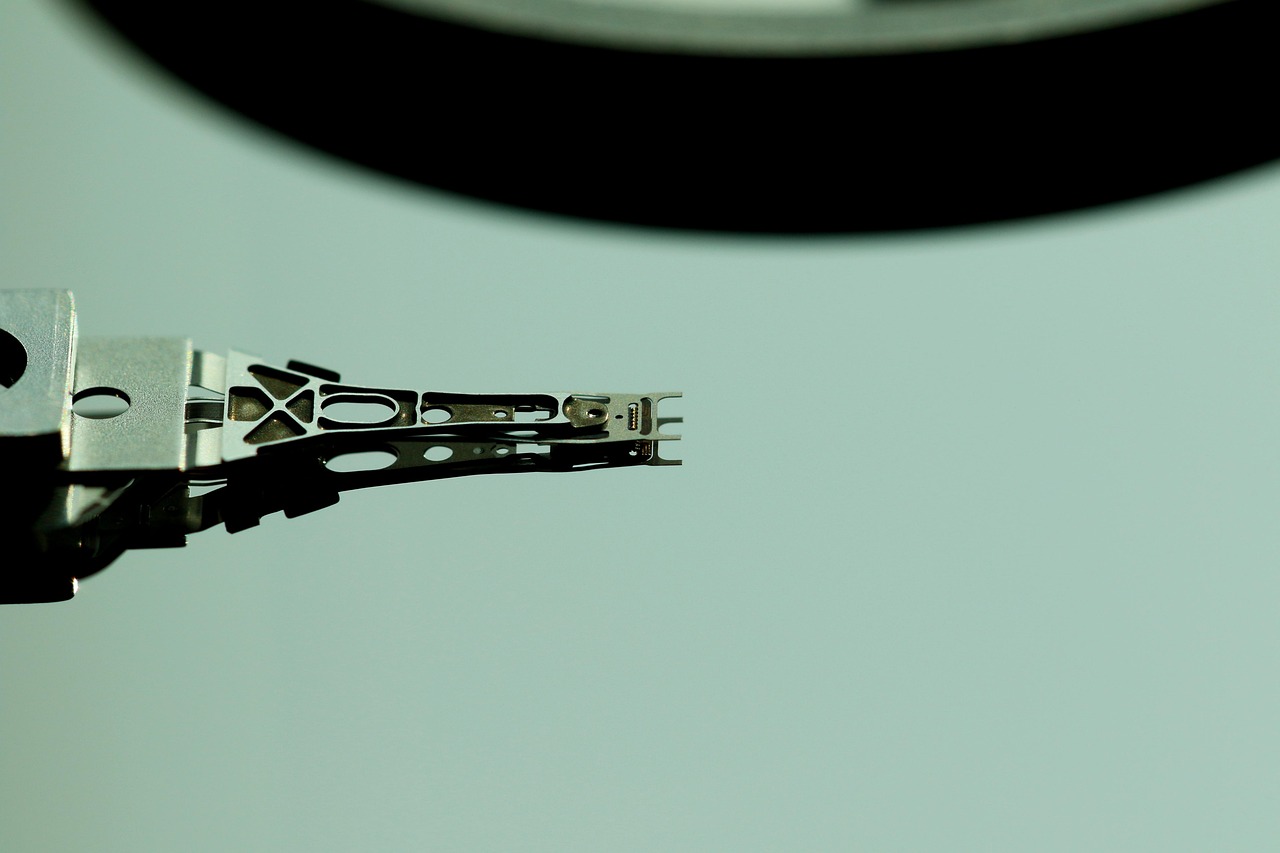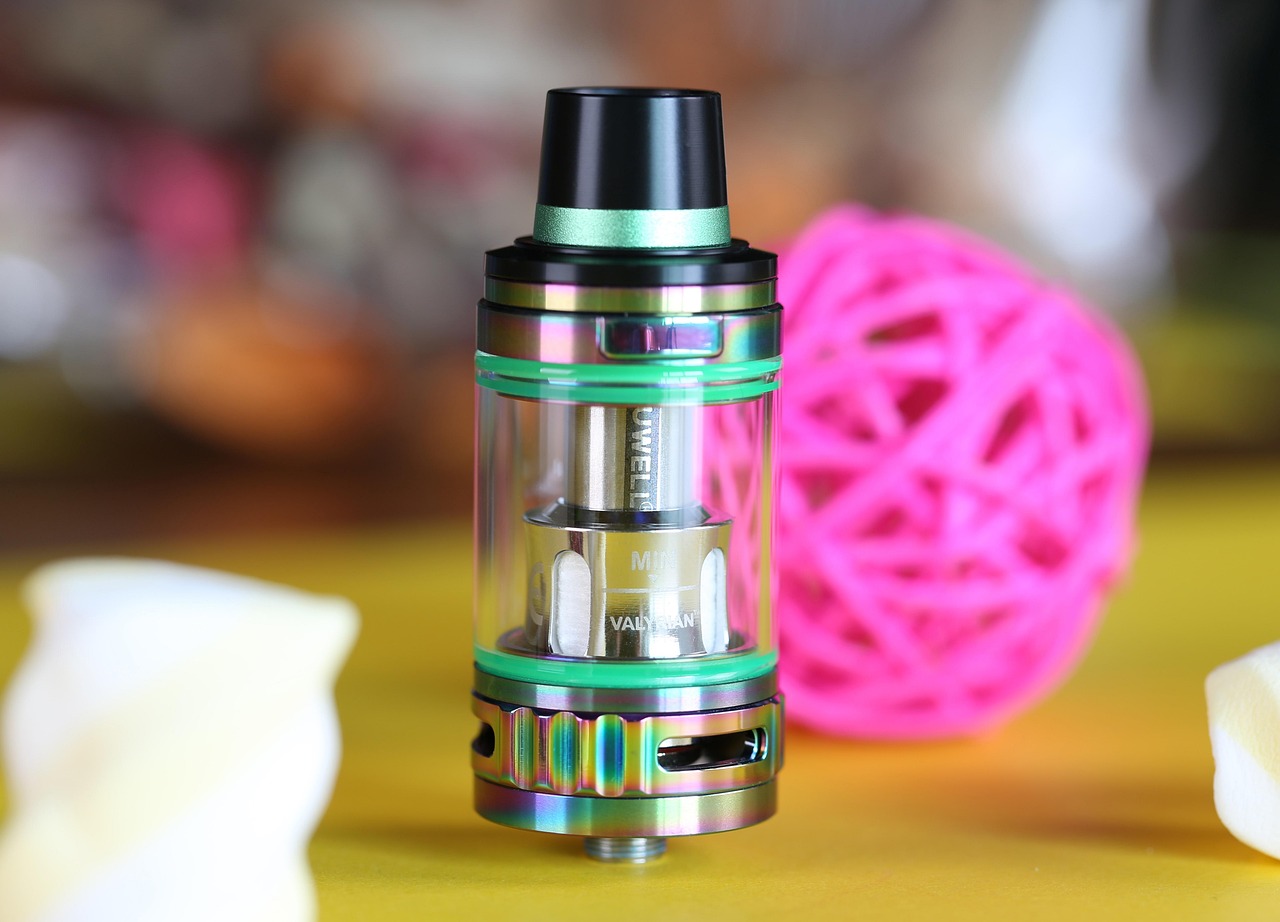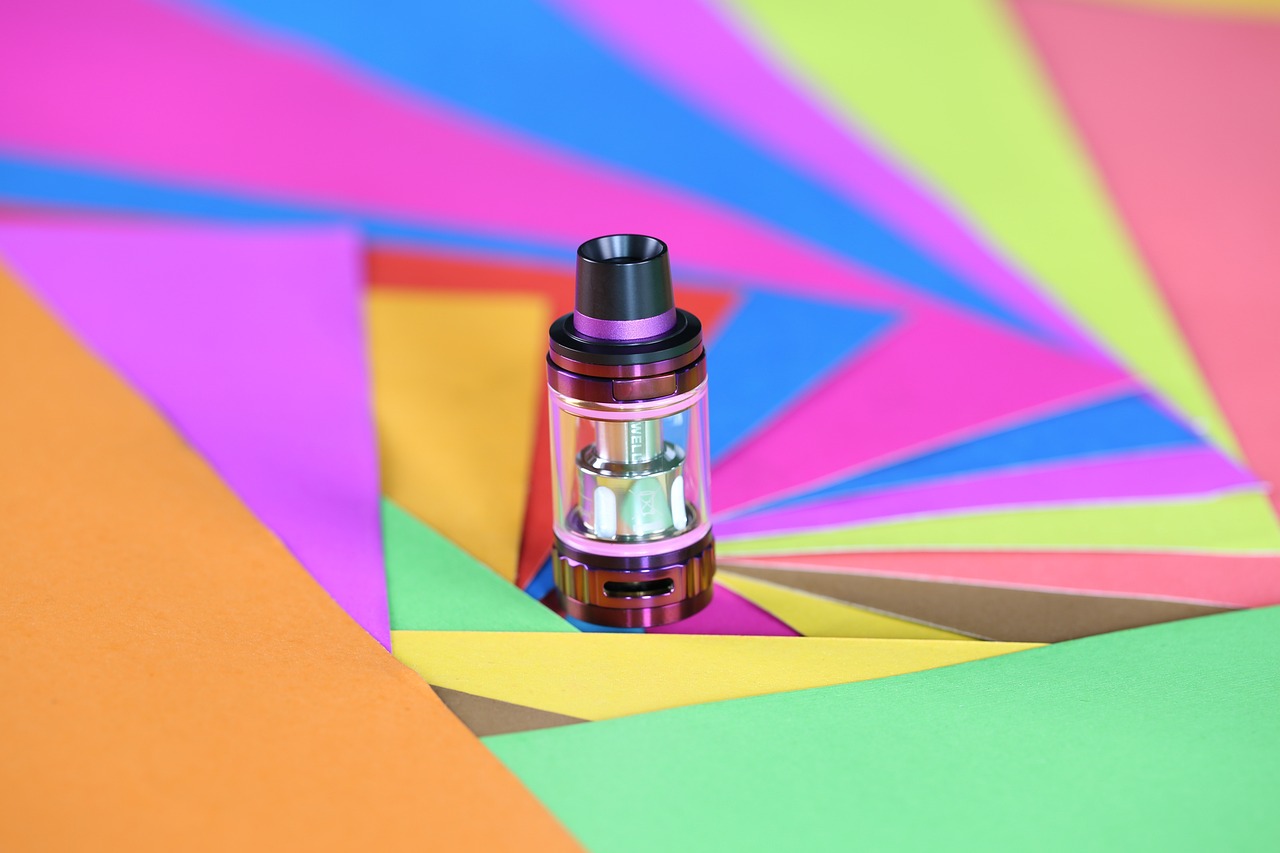The vape market is undergoing significant changes as it adapts to an ever-evolving regulatory landscape. This article delves into how businesses are responding to these shifts, highlighting key trends, challenges, and strategies that are shaping the future of vaping.
Understanding the current regulations is essential for all stakeholders in the vape industry. Governments worldwide are implementing various laws that impact everything from product formulation to marketing practices. Key regulations include:
- Age Restrictions: Many countries have raised the legal age for purchasing vape products to 21.
- Flavor Bans: Some regions have prohibited flavored e-liquids to reduce youth appeal.
- Advertising Restrictions: Stricter rules on advertising are being enforced to limit exposure to minors.
In response to these regulations, manufacturers are innovating their products and practices. This includes:
- Product Formulation Adjustments: Many companies are reformulating their products to comply with new ingredient restrictions.
- Compliance with Flavor Bans: Businesses are exploring alternative flavor profiles that meet legal standards while retaining customer interest.
- Labeling and Packaging Standards: New labeling requirements are reshaping packaging designs, ensuring transparency and compliance.
Compliance can be a significant hurdle for vape businesses. The challenges include:
- Financial Implications of Compliance: The costs associated with meeting regulatory standards can be substantial, impacting smaller businesses disproportionately.
- Impact on Small Businesses: Smaller companies often lack the resources to navigate complex regulations effectively, putting them at a disadvantage.
Advocacy groups play a crucial role in influencing vape regulations. They engage in:
- Consumer Advocacy and Public Health: These groups prioritize public health, advocating for regulations that protect consumers.
- Industry Associations and Lobbying Efforts: Industry associations work to lobby for balanced regulations that support both public health and business interests.
Global regulations vary significantly, affecting how the vape market operates. Key insights include:
- Regional Differences in Regulation: Understanding how regulations differ across markets is essential for businesses looking to expand internationally.
- Emerging Markets and Opportunities: As regulations evolve, new markets are opening, presenting opportunities for growth.
The vape industry is poised for further evolution. Future trends include:
- Sustainability and Eco-Friendly Practices: Companies are increasingly adopting eco-friendly practices to appeal to environmentally conscious consumers.
- The Role of Education and Consumer Awareness: Investing in consumer education is becoming vital for promoting responsible vaping and compliance with regulations.
As the vape market continues to adapt to changing regulations, businesses that proactively embrace compliance and innovation will be better positioned for success. By understanding the regulatory landscape and adjusting strategies accordingly, companies can navigate challenges while seizing new opportunities in this dynamic industry.

What Are the Current Regulations Affecting the Vape Industry?
The vape industry has seen rapid growth over the past decade, but with this expansion comes a complex web of regulations that vary significantly across different jurisdictions. Understanding the landscape of vape regulations is crucial for stakeholders, including manufacturers, retailers, and consumers. This section delves into the most significant laws and guidelines that are shaping the market today, ensuring that businesses remain compliant while navigating these challenges.
- Federal Regulations: In many countries, federal laws dictate the sale, marketing, and distribution of vaping products. In the United States, the Food and Drug Administration (FDA) oversees the regulation of e-cigarettes and vaping devices. Under the Family Smoking Prevention and Tobacco Control Act, manufacturers must submit their products for review and approval before they can be marketed.
- State and Local Laws: Beyond federal regulations, individual states and local governments often impose their own rules. These can include restrictions on where vaping is allowed, age limits for purchasing products, and specific licensing requirements for retailers. For instance, some states have enacted flavor bans to curb youth vaping, which has forced manufacturers to adapt their product lines.
- Advertising Restrictions: The marketing of vaping products is heavily regulated to prevent misleading claims and protect public health. Many jurisdictions have implemented strict guidelines regarding advertising strategies, especially those targeting minors. This includes limitations on social media promotions and sponsorships.
- Health and Safety Standards: Regulations often include requirements for product safety and quality control. Manufacturers must adhere to stringent guidelines regarding the ingredients used in e-liquids, ensuring that harmful substances are minimized. This includes compliance with proper labeling and ingredient disclosure.
As the regulatory landscape continues to evolve, stakeholders must stay informed about these changes. Compliance is not just about adhering to existing laws; it also involves anticipating future regulations that may emerge as public health concerns evolve. This proactive approach can help businesses mitigate risks and seize opportunities in a rapidly changing market.
In addition to understanding the regulations, stakeholders should also consider the impact of advocacy groups and public health organizations. These entities play a significant role in shaping the regulatory environment by raising awareness about vaping-related health issues and influencing legislation. Their advocacy efforts can lead to more stringent regulations or, conversely, to the relaxation of certain rules if they find that regulations are overly burdensome.
Furthermore, the global nature of the vape industry means that regulations can vary widely from one country to another. Businesses looking to expand internationally must conduct thorough research into the regulatory requirements of each market. For example, while some countries may embrace vaping as a less harmful alternative to smoking, others may impose heavy restrictions or outright bans.
In conclusion, understanding the current regulations affecting the vape industry is essential for all stakeholders. By staying informed and adaptable, businesses can not only comply with existing laws but also position themselves for future growth in an ever-evolving market.

How Are Vape Manufacturers Responding to Regulatory Changes?
The vape industry is undergoing significant transformations as manufacturers strive to meet the demands of evolving regulations. This section delves into the innovative strategies and product modifications that are shaping the future of vaping, ensuring compliance while catering to consumer preferences.
As regulations tighten globally, vape manufacturers are not just reacting; they are proactively adapting their business models and product lines to align with new legal frameworks. This adaptability is crucial for survival in a competitive market where compliance can determine a company’s future.
To comply with new regulations, manufacturers are investing in research and development to innovate their product offerings. This includes reformulating e-liquids to reduce harmful substances and adjusting nicotine levels to meet legal standards. Many companies are exploring natural and organic ingredients to appeal to health-conscious consumers while ensuring compliance with regulations.
Flavor bans have emerged as a critical challenge for the vape industry. Many manufacturers are creatively modifying their flavor profiles to comply with these regulations while still maintaining consumer interest. For instance, companies are introducing new flavor combinations that fall within legal guidelines but are still appealing to their customer base. This approach not only keeps existing customers engaged but also attracts new ones.
With new labeling requirements in place, manufacturers are redesigning their packaging to ensure compliance. Clear and informative labels are essential for building consumer trust and adhering to legal standards. Many companies are now incorporating QR codes that link to detailed product information, helping consumers make informed choices while fulfilling regulatory obligations.
Technological advancements are playing a pivotal role in helping manufacturers navigate regulatory landscapes. From automated compliance tracking systems to advanced quality control measures, technology is enabling companies to monitor their products closely and ensure they meet all necessary standards. This not only streamlines operations but also reduces the risk of non-compliance penalties.
The financial implications of compliance are significant, with many manufacturers facing increased costs. To manage these expenses, companies are reassessing their budgets and reallocating resources towards compliance initiatives. This may involve investing in new technologies or reformulating products, but it is seen as a necessary step to ensure long-term viability in the market.
Small vape businesses often face unique challenges in adapting to regulatory changes. Many lack the resources of larger corporations to implement compliance measures effectively. However, some are finding success by collaborating with industry associations that provide guidance and support. These partnerships can help small businesses navigate the complex regulatory environment while remaining competitive.
In conclusion, the vape industry is in a state of flux as manufacturers respond to regulatory changes with innovative strategies and product modifications. By focusing on compliance, enhancing product offerings, and leveraging technology, companies can not only survive but thrive in this challenging landscape.
Product Formulation Adjustments
The vape industry is undergoing significant transformations as manufacturers respond to evolving regulations. One of the most critical aspects of this adaptation is . This section delves into how changes in ingredients and nicotine levels are reshaping the offerings in the market, ensuring compliance while striving to meet consumer preferences.
With increasing scrutiny from regulatory bodies, manufacturers are compelled to reformulate their products to align with new guidelines. These adjustments are not merely reactive; they are strategic moves aimed at maintaining market share and consumer trust. As public health concerns grow, companies are re-evaluating their ingredient lists and nicotine concentrations to create safer alternatives.
- Reduction of Harmful Compounds: Many manufacturers are eliminating or reducing the presence of potentially harmful substances, such as diacetyl, which has been linked to respiratory issues.
- Natural Ingredients: There is a growing trend towards using natural flavorings and sweeteners instead of artificial ones, catering to health-conscious consumers.
- Enhanced Transparency: Companies are increasingly transparent about their ingredient sourcing, which is crucial for building consumer trust.
Another significant adjustment involves the nicotine levels in vape products. As regulations tighten, particularly in regions focused on reducing nicotine consumption, manufacturers are compelled to:
- Offer Lower Nicotine Options: Many brands are introducing products with lower nicotine concentrations to appeal to a broader audience, including those looking to quit smoking.
- Provide Clearer Labeling: Compliance with new regulations necessitates clearer labeling regarding nicotine content, ensuring consumers are well-informed about what they are inhaling.
The reformulation of products has led to a notable shift in the vape market landscape. Manufacturers are now offering a wider array of products that cater to diverse consumer preferences while adhering to regulatory standards. This evolution not only helps in compliance but also enhances the overall consumer experience.
Balancing regulatory compliance with consumer demand can be challenging. Companies are investing in market research to understand consumer preferences better and align their product offerings accordingly. This proactive approach allows manufacturers to innovate within the constraints of regulation, creating products that appeal to both health-conscious consumers and traditional vape users.
Looking ahead, the vape industry is likely to see continued emphasis on safety and transparency. As regulations evolve, manufacturers will need to stay ahead of the curve by:
- Investing in Research and Development: Continuous innovation will be essential to create safer and more appealing products.
- Engaging with Consumers: Feedback loops will become increasingly important, allowing manufacturers to adjust formulations based on consumer preferences and concerns.
In conclusion, the adjustments in product formulations within the vape industry reflect a complex interplay of regulatory compliance, consumer demand, and public health considerations. As manufacturers navigate these challenges, the focus on creating safer, more transparent products will likely shape the future of vaping.
Compliance with Flavor Bans
As the vape industry faces increasing scrutiny from regulators, has emerged as a pivotal challenge. These regulations aim to reduce youth access to flavored vaping products, which are often perceived as more appealing to younger demographics. In response, companies are re-evaluating their flavor profiles while striving to maintain consumer interest. This article explores how businesses are navigating these changes, ensuring compliance, and adapting to new market dynamics.
Flavor bans refer to regulations that prohibit the sale of flavored vaping products, including fruit, candy, and dessert flavors. These bans are implemented to address public health concerns, particularly among adolescents. Understanding the implications of such regulations is crucial for manufacturers, retailers, and consumers alike.
In light of flavor bans, many companies are shifting their product offerings. Here are some strategies being employed:
- Development of Tobacco and Menthol Flavors: Some manufacturers are pivoting to more traditional flavors, such as tobacco and menthol, which are less likely to be banned.
- Creation of Hybrid Flavors: Innovative companies are experimenting with hybrid flavors that blend traditional and subtle hints of sweetness, appealing to adult consumers without crossing regulatory lines.
- Consumer Feedback Integration: Brands are actively seeking consumer input to understand preferences, ensuring that new flavors resonate with their target market.
While adapting to flavor bans is essential, companies encounter several hurdles:
- Cost of Reformulation: Reformulating products can be expensive, requiring investment in research and development.
- Consumer Loyalty: Brands risk losing loyal customers who may prefer specific flavors that are now banned.
- Market Competition: With many companies adjusting their flavors, standing out in a crowded market becomes increasingly challenging.
To retain their customer base, brands are employing various strategies:
- Marketing Campaigns: Companies are launching campaigns to educate consumers about new flavor options and the benefits of their products.
- Quality and Experience Focus: Emphasizing the quality of ingredients and the overall vaping experience can help attract consumers back to the brand.
- Engagement with Community: Building a community around the brand through social media and events fosters loyalty and keeps consumers engaged.
As the regulatory landscape continues to evolve, companies must stay ahead of trends and adapt quickly. The ongoing dialogue between regulators, health advocates, and the vaping industry will likely shape future flavor policies. Companies that proactively engage with these discussions and demonstrate a commitment to responsible practices will be better positioned for long-term success.
In conclusion, while compliance with flavor bans presents significant challenges, it also opens avenues for innovation and adaptation within the vape market. By focusing on consumer preferences and regulatory requirements, companies can navigate these hurdles effectively, ensuring both compliance and continued consumer interest.
Labeling and Packaging Standards
The vape industry is undergoing significant transformations as new labeling and packaging standards come into play. These changes are not just regulatory hurdles; they are essential for building and maintaining consumer trust while ensuring compliance with legal requirements. Clear and compliant labeling is now more critical than ever, as it directly impacts how consumers perceive products and make purchasing decisions.
New labeling requirements are reshaping the way vape products are packaged. This is crucial for several reasons:
- Consumer Safety: Accurate labeling provides essential information about ingredients, nicotine levels, and usage instructions, helping consumers make informed choices.
- Legal Compliance: Adhering to labeling regulations is mandatory for manufacturers, and failure to comply can lead to legal repercussions.
- Brand Integrity: Transparent labeling fosters brand loyalty, as consumers are more likely to trust brands that are upfront about their products.
While the transition to new labeling standards is necessary, it poses several challenges for vape manufacturers:
- Cost of Compliance: Updating packaging and labels can incur significant costs, especially for small businesses that may struggle to absorb these expenses.
- Design Restrictions: New guidelines may limit creative freedom in packaging design, making it challenging for brands to stand out in a crowded market.
- Consumer Confusion: Frequent changes in labeling requirements may confuse consumers, leading to mistrust or misunderstanding of products.
In response to the evolving regulatory landscape, many vape manufacturers are implementing innovative strategies to ensure compliance:
- Investing in Technology: Companies are leveraging technology to streamline the labeling process, ensuring accuracy and compliance with regulations.
- Engaging in Consumer Education: Brands are taking proactive steps to educate consumers about new labeling practices, enhancing transparency and trust.
- Collaborating with Regulatory Bodies: By working closely with regulatory agencies, manufacturers can stay ahead of changes and better understand compliance requirements.
Consumer feedback is invaluable in shaping labeling practices. Here’s how it impacts the industry:
- Identifying Gaps: Feedback helps manufacturers identify gaps in labeling that may lead to confusion or misinformation.
- Enhancing Product Development: Consumer preferences can guide manufacturers in developing products that align with market demand while ensuring compliance.
- Building Community Trust: Actively seeking and responding to consumer feedback fosters a sense of community and trust between brands and their customers.
As the vape industry continues to evolve, several trends are likely to shape the future of labeling and packaging:
- Sustainability: With increasing consumer awareness around environmental issues, sustainable packaging solutions are becoming a priority.
- Personalization: Customized labeling that resonates with target audiences will likely become more prevalent as brands seek to differentiate themselves.
- Technological Integration: The use of QR codes and augmented reality on packaging can provide consumers with interactive experiences and additional product information.
In summary, new labeling and packaging standards are fundamentally reshaping the vape market. By prioritizing clear, compliant labeling, manufacturers not only adhere to legal requirements but also strengthen their relationship with consumers. As the industry adapts to these changes, it is essential for all stakeholders to remain informed and proactive in navigating this evolving landscape.
Technological Innovations in the Vape Market
In today’s rapidly evolving vape market, technological innovations are at the forefront of compliance and product development. With increasing regulatory scrutiny, companies are leveraging advanced technologies to navigate the complex landscape of laws and guidelines effectively. This section explores how these innovations are reshaping the industry.
As regulations become more stringent, the need for compliance has never been greater. Technology plays a crucial role in ensuring that vape manufacturers adhere to these regulations while maintaining product quality. By utilizing data analytics and automated systems, companies can streamline their compliance processes, minimizing the risk of errors and enhancing efficiency.
Data analytics is revolutionizing product development in the vape industry. By analyzing consumer preferences and market trends, manufacturers can make informed decisions about product formulations and flavor profiles. This not only helps in creating products that meet regulatory standards but also aligns with consumer demands. For instance, companies can track the popularity of flavors and adjust their offerings accordingly, ensuring compliance with any flavor bans while still catering to customer preferences.
Another significant technological advancement in the vape industry is 3D printing. This innovative technology allows manufacturers to create prototypes quickly and cost-effectively. By using 3D printing, companies can test new designs and product features before committing to large-scale production. This iterative process not only speeds up development but also ensures that products meet regulatory requirements before they hit the market.
Blockchain technology is emerging as a powerful tool for enhancing transparency and traceability in the vape supply chain. By utilizing blockchain, companies can securely document every step of the production process, from sourcing raw materials to final product distribution. This level of transparency helps in verifying compliance with regulations and building trust with consumers. Additionally, in the event of a product recall, blockchain allows for quick identification of affected batches, minimizing potential health risks.
Mobile applications are becoming essential tools for both manufacturers and consumers in the vape market. These apps can provide users with important information about product ingredients, usage guidelines, and compliance with local regulations. Furthermore, companies can use apps to gather feedback from consumers, enabling them to make data-driven decisions that enhance product offerings while adhering to regulatory standards.
While technological advancements offer numerous benefits, they also come with challenges. The financial cost of implementing new technologies can be significant, particularly for smaller businesses. Additionally, there is a steep learning curve associated with adopting new systems, which can lead to temporary disruptions in operations. Companies must weigh these challenges against the potential benefits of improved compliance and product development.
Looking ahead, the integration of technology in the vape market is set to deepen. As regulations continue to evolve, companies that embrace technological innovations will be better positioned to adapt and thrive. The ongoing development of artificial intelligence and machine learning will further enhance product customization and compliance monitoring, ensuring that manufacturers can respond swiftly to regulatory changes.
In conclusion, technological innovations are not just shaping compliance and product development; they are redefining the entire vape industry landscape. By leveraging these advancements, companies can navigate regulatory challenges more effectively, meet consumer demands, and ultimately drive growth in a competitive market.
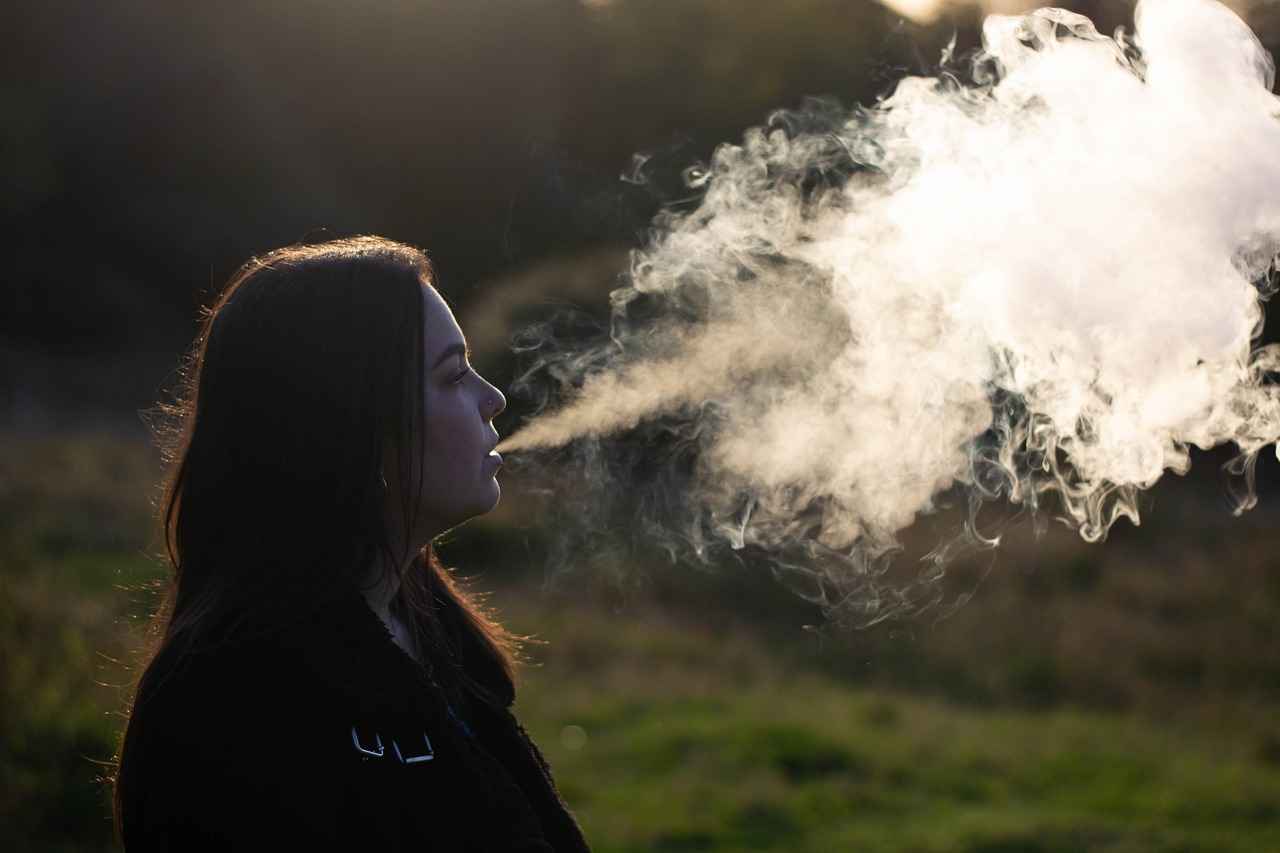
What Challenges Do Vape Businesses Face with Regulation Compliance?
In the rapidly evolving vape industry, compliance with regulations presents significant challenges for businesses. As governments around the world implement stricter rules to manage the sale and distribution of vaping products, companies must navigate a complex landscape to remain operational and competitive.
Compliance can be a daunting task for vape businesses. The primary challenges companies encounter when trying to adhere to regulations include:
- Understanding Diverse Regulations: Each region may have its own set of regulations regarding ingredients, marketing, and sales. This diversity can create confusion for businesses that operate in multiple markets.
- Financial Burdens: The cost of compliance can be substantial. Companies must invest in legal counsel, compliance training, and sometimes even reformulating products to meet new standards.
- Documentation and Reporting: Many regulations require extensive documentation and regular reporting. This can strain resources, especially for smaller businesses lacking dedicated compliance teams.
- Consumer Perception: Compliance issues can negatively impact consumer trust. If a company is found to be non-compliant, it can lead to a loss of reputation and customer loyalty.
The financial implications of compliance are significant. Companies often face costs related to:
- Legal Fees: Engaging legal experts to navigate the complex regulatory environment can be expensive.
- Product Reformulation: Adjusting product formulations to comply with new regulations may require additional research and development costs.
- Training and Education: Investing in employee training programs to ensure compliance can be a recurring expense.
Small vape businesses often struggle more with regulatory compliance compared to larger corporations. They typically have fewer resources and less access to legal advice, making it challenging to keep up with changing laws. As a result, many small businesses may find themselves at a disadvantage, unable to compete with larger firms that can absorb compliance costs more easily.
As regulations evolve, technology plays a crucial role in ensuring compliance. However, adopting new technologies can pose its own challenges:
- Investment in Compliance Tools: Companies may need to invest in software and systems that help track compliance, which can be costly.
- Staying Updated: Keeping up with technological advancements and regulatory changes requires constant monitoring, which can be resource-intensive.
Flavor bans and restrictions on certain products are significant hurdles for vape businesses. Companies must find ways to innovate while adhering to these bans. This often leads to:
- Product Diversification: Companies may need to develop new product lines that comply with flavor restrictions while still appealing to consumers.
- Marketing Challenges: Restrictions on advertising and promotions can limit a company’s ability to reach its target audience effectively.
In conclusion, navigating regulatory compliance in the vape industry is a multifaceted challenge that requires careful planning, investment, and adaptability. As regulations continue to evolve, businesses must remain vigilant and proactive to ensure they meet legal standards while maintaining their competitive edge.
Financial Implications of Compliance
The in the vape industry are profound and multifaceted. As regulations tighten globally, companies are feeling the pressure to adapt their operations, which often comes with significant costs. This article explores the various financial burdens that businesses face and the strategies they employ to manage these expenses effectively.
Compliance with regulations can impose a heavy financial burden on vape companies. From product reformulation to enhanced labeling requirements, the costs can accumulate quickly. For instance, manufacturers may need to invest in new testing protocols to ensure that their products meet safety standards. This can involve hiring third-party laboratories, which can be expensive.
To mitigate the financial impact of compliance, many companies are adopting various strategies:
- Streamlining Operations: By optimizing their production processes, companies can reduce waste and lower costs associated with compliance.
- Investing in Technology: Advanced technology can help automate compliance processes, making them more efficient and less costly in the long run.
- Collaborative Approaches: Some businesses are joining forces to share the costs associated with compliance, such as collective testing and regulatory lobbying.
The financial strain of compliance can significantly impact profit margins. As companies allocate more resources to meet regulatory demands, they may have less capital available for innovation and marketing. This can lead to a reduction in competitiveness in a rapidly changing market. Small businesses, in particular, may struggle to absorb these costs, leading to potential downsizing or, in some cases, closure.
Effective financial planning is crucial for vape companies navigating compliance challenges. Businesses must forecast potential compliance costs and integrate them into their overall financial strategy. This proactive approach allows companies to allocate resources wisely and minimize the risk of unexpected expenses.
In the long term, companies can adopt several strategies to ensure they remain financially viable while complying with regulations:
- Diversification: Expanding product lines or entering new markets can help offset compliance costs by generating additional revenue streams.
- Enhanced Consumer Education: Informing consumers about the importance of compliance can foster brand loyalty, potentially increasing sales and offsetting costs.
- Advocacy and Lobbying: Engaging with regulatory bodies and advocating for fair regulations can help shape a more favorable compliance landscape.
Ultimately, while the financial implications of compliance in the vape industry can be daunting, companies that strategically manage these costs can position themselves for long-term success. By investing in technology, streamlining operations, and engaging in collaborative efforts, businesses can navigate the complexities of regulation while maintaining profitability.
Impact on Small Businesses
The vape industry has experienced rapid growth, but small businesses often find themselves at a disadvantage when it comes to navigating the complex landscape of regulatory compliance. Unlike larger corporations that have dedicated legal teams and substantial resources, small vape businesses face unique challenges that can hinder their ability to thrive in a competitive market.
Small vape businesses encounter several hurdles related to regulatory compliance, which can significantly impact their operations and sustainability. Some of the most pressing challenges include:
- Limited Financial Resources: Small businesses often operate on tighter budgets, making it difficult to allocate funds for compliance-related expenses. This includes costs associated with legal consultations, product testing, and modifications to meet regulatory standards.
- Knowledge Gaps: Many small business owners may lack the expertise or knowledge required to fully understand the intricacies of vaping regulations. This gap can lead to unintentional violations, resulting in fines or shutdowns.
- Inconsistent Regulations: The vaping landscape is characterized by rapidly changing regulations that can vary significantly by region. Small businesses may struggle to keep up with these changes, especially if they operate in multiple jurisdictions.
The financial burden of compliance can be particularly daunting for small vape businesses. They are often required to invest in:
- Product Testing: Ensuring that products meet safety and quality standards can be costly, especially when third-party testing is mandated.
- Labeling and Packaging: Compliance with new labeling requirements necessitates redesigning packaging, which can lead to additional expenses.
These costs can detract from funds that could otherwise be used for marketing, product development, or expanding the business.
Despite the challenges, small vape businesses can adopt several strategies to better navigate regulatory compliance:
- Education and Training: Investing in training for staff about regulatory requirements can help mitigate risks associated with non-compliance.
- Networking with Industry Associations: Joining industry associations can provide small businesses with access to resources, guidance, and advocacy efforts aimed at influencing fair regulations.
- Utilizing Technology: Leveraging technology for tracking compliance and managing documentation can streamline processes and reduce the likelihood of errors.
Advocacy groups play a crucial role in shaping regulations that affect small vape businesses. These organizations work to:
- Promote Fair Regulations: Advocacy groups often lobby for regulations that consider the unique challenges faced by small businesses, ensuring their voices are heard in legislative discussions.
- Provide Resources: Many advocacy groups offer resources and support to help small businesses understand and comply with regulations.
By collaborating with these organizations, small vape businesses can bolster their compliance efforts while contributing to a more balanced regulatory environment.
Looking ahead, small vape businesses must remain proactive in their approach to regulatory compliance. This includes:
- Staying Informed: Keeping abreast of changes in regulations at local, state, and federal levels is vital for compliance.
- Engaging with Consumers: Building strong relationships with customers can provide valuable insights and feedback, helping businesses adapt to changing preferences and regulatory environments.
By adopting these strategies, small vape businesses can enhance their resilience and adaptability in an ever-evolving market.

What Role Do Advocacy Groups Play in Shaping Vape Regulations?
Advocacy groups play a pivotal role in shaping the regulatory framework surrounding the vape industry. These organizations not only influence legislation but also provide essential support to the industry, ensuring that the voices of both consumers and manufacturers are heard. In this section, we will explore the various ways in which advocacy groups impact vape regulations and contribute to the industry’s growth.
Advocacy groups serve as a bridge between policymakers and the vaping community. They engage in lobbying efforts to promote fair regulations that support the vape industry while addressing public health concerns. By providing research, data, and expert opinions, these organizations help legislators make informed decisions that consider both consumer safety and industry viability.
- Consumer Education: Advocacy groups prioritize educating consumers about vaping products and their potential risks. This education fosters responsible usage and encourages informed decision-making.
- Policy Advocacy: These organizations actively lobby for regulations that are fair and balanced, representing the interests of both consumers and manufacturers.
- Research and Development: Many advocacy groups invest in research to understand the health implications of vaping, providing valuable insights that can shape regulatory decisions.
By advocating for reasonable regulations, these groups help ensure that the vape industry can thrive. For instance, they work to protect the rights of vape manufacturers against overly restrictive laws that could hinder innovation and growth. Advocacy groups also collaborate with industry stakeholders to develop best practices that promote safety and compliance.
Public perception of vaping is heavily influenced by the efforts of advocacy groups. By disseminating accurate information and debunking myths, these organizations help to mitigate fear and misinformation surrounding vaping. This, in turn, can lead to more favorable regulations and a better understanding of the industry among consumers and lawmakers alike.
Several advocacy groups have successfully influenced legislation in favor of the vape industry. For example, organizations have campaigned against flavor bans that disproportionately affect adult vapers. Through public campaigns and lobbying efforts, they have highlighted the importance of flavor options in helping smokers transition to less harmful alternatives.
Despite their efforts, advocacy groups encounter numerous challenges. These include combating negative media portrayals, addressing public health concerns, and facing opposition from anti-vaping organizations. Additionally, maintaining funding and resources to continue their advocacy work can be a significant hurdle.
Collaboration is key to creating a unified front in the face of regulatory challenges. Stakeholders, including manufacturers and retailers, can work alongside advocacy groups to share insights, data, and resources. By aligning their goals, they can effectively advocate for regulations that support both public health and the sustainability of the vape industry.
In conclusion, advocacy groups are essential players in the regulatory landscape of the vape industry. Their efforts not only help shape legislation but also support the industry’s growth and public education initiatives. By understanding and engaging with these organizations, stakeholders can better navigate the complexities of vaping regulations.
Consumer Advocacy and Public Health
Consumer advocacy groups play a critical role in the evolving landscape of public health, especially concerning vaping products. Their primary mission is to protect consumers by promoting safety, transparency, and informed choices. This section delves into how these organizations influence perceptions and regulations surrounding vaping.
Consumer advocacy groups act as watchdogs over the vaping industry, ensuring that companies adhere to safety standards and regulations. They work tirelessly to educate the public about the potential risks associated with vaping, often emphasizing the importance of informed decision-making. By conducting research and disseminating information, these groups help shape public perception and policy.
Through campaigns and outreach programs, consumer advocacy groups strive to raise awareness about the health implications of vaping. They often highlight concerns related to nicotine addiction, the presence of harmful chemicals, and the impact of vaping on youth. By framing the narrative around these issues, they can sway public opinion and encourage regulatory bodies to take action.
- Research and Data Collection: Advocacy groups often conduct studies to gather data on the health effects of vaping. This information is crucial in lobbying for stricter regulations.
- Public Campaigns: They engage in public awareness campaigns to educate consumers about the risks associated with vaping and advocate for safer practices.
- Collaboration with Health Organizations: Many advocacy groups partner with health organizations to amplify their message and gain credibility in their efforts.
Consumer advocacy groups have a significant impact on the regulatory landscape for vaping products. They often lobby for policies that prioritize public health and safety. By presenting research findings and public testimonies, these organizations can influence lawmakers to consider stricter regulations regarding marketing, product safety, and age restrictions.
Despite their efforts, consumer advocacy groups encounter several challenges. One major obstacle is the financial power of the vaping industry, which can outspend advocacy groups on lobbying efforts. Additionally, there is often a lack of consensus within the public regarding the risks associated with vaping, making it difficult for these organizations to push for change.
Consumers can play an active role in supporting advocacy efforts by staying informed and engaging with these organizations. By participating in campaigns, sharing information, and advocating for safer products, individuals can contribute to the push for better regulations. Additionally, supporting legislation that prioritizes public health can help ensure that the vaping industry is held accountable.
In summary, consumer advocacy groups are essential in shaping the narrative around vaping and influencing regulations. Their commitment to public health drives them to educate consumers and lobby for policies that safeguard the community. As the vaping landscape continues to evolve, the role of these organizations will remain vital in ensuring that consumer safety is prioritized.
Industry Associations and Lobbying Efforts
In the rapidly evolving landscape of the vape industry, industry associations play a crucial role in shaping policies and regulations. These organizations serve as a collective voice for manufacturers, retailers, and consumers, advocating for fair practices that benefit all stakeholders involved. As the regulatory environment becomes increasingly complex, the efforts of these associations in lobbying for balanced regulations have never been more critical.
Industry associations engage in lobbying efforts to influence policymakers by presenting data, research, and expert opinions that support their positions. Their primary objectives include:
- Advocating for Fair Regulations: Associations work tirelessly to ensure that regulations are not only fair but also practical for businesses to implement.
- Promoting Consumer Safety: By lobbying for evidence-based regulations, they aim to enhance consumer safety while ensuring that products remain accessible.
- Fostering Innovation: Associations advocate for policies that encourage innovation within the industry, allowing businesses to develop new products that meet consumer demands.
Through various strategies, industry associations can significantly influence policy decisions:
- Research and Data Presentation: By conducting studies and presenting data, associations can provide compelling evidence to support their lobbying efforts.
- Building Relationships: Establishing strong connections with lawmakers and regulatory bodies is essential. Associations often organize meetings and events to facilitate dialogue.
- Public Awareness Campaigns: Raising awareness about the benefits of vaping as a less harmful alternative to smoking can shift public perception and influence policy.
Despite their efforts, industry associations encounter several challenges in their lobbying endeavors:
- Opposition from Public Health Groups: Advocacy groups focused on public health often challenge the vaping industry, pushing for stricter regulations that can hinder lobbying efforts.
- Rapidly Changing Regulations: The dynamic nature of regulations makes it difficult for associations to keep up and respond effectively.
- Funding and Resources: Limited financial resources can restrict the ability of smaller associations to engage in extensive lobbying campaigns.
There are several notable success stories that demonstrate the effectiveness of industry associations in lobbying:
- Successful Repeals of Overreaching Regulations: In various regions, associations have successfully lobbied for the repeal of regulations perceived as overly restrictive, allowing businesses to thrive.
- Implementation of Reasonable Taxation Policies: By advocating for fair tax policies, associations have helped create a more favorable economic environment for vape businesses.
- Consumer Education Initiatives: Many associations have launched educational campaigns that inform consumers about the safety and benefits of vaping, helping to shift public opinion.
In summary, industry associations play a vital role in lobbying for regulations that promote both business interests and consumer safety. Their efforts to advocate for fair regulations, influence policy decisions, and overcome challenges are essential in shaping a sustainable future for the vape industry. As the landscape continues to evolve, the importance of these associations in navigating regulatory complexities cannot be overstated.
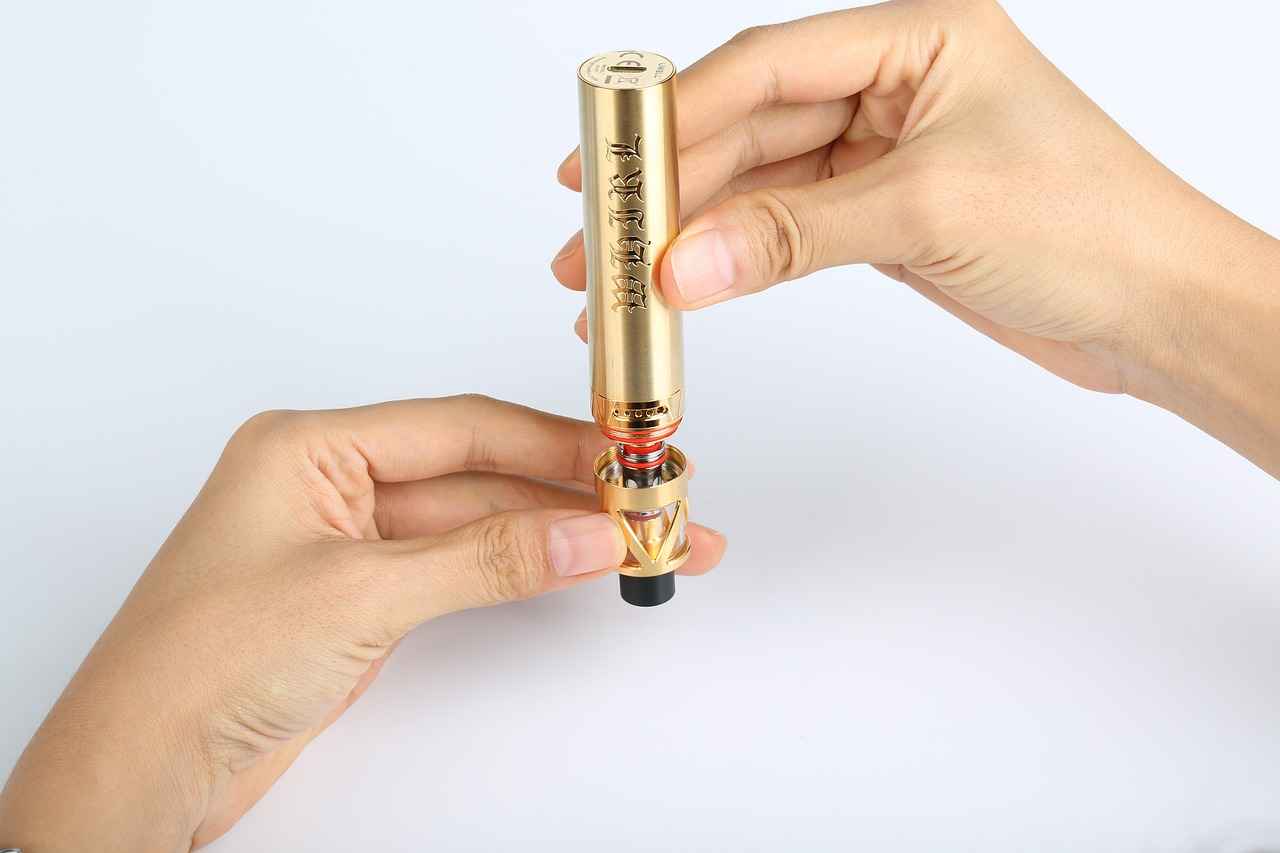
How Is the Vape Market Evolving Globally?
The global vape market is undergoing significant changes as it adapts to a myriad of regulations that vary from one region to another. Understanding these evolving dynamics is essential for stakeholders, manufacturers, and consumers alike. This section explores how the vape market is evolving globally, highlighting trends, challenges, and opportunities that arise from diverse regulatory environments.
Regulations surrounding vaping products differ widely across countries, driven by public health concerns, consumer safety, and economic factors. For instance, while some nations have embraced vaping as a harm-reduction strategy, others have implemented stringent bans on flavored products and marketing practices. These regulations significantly influence how businesses operate and innovate.
Understanding the regional differences in vape regulations is vital for companies operating internationally. In the United States, the FDA oversees the regulation of vape products, focusing on safety and marketing practices. Conversely, the European Union has established comprehensive regulations that include strict labeling and ingredient disclosure requirements. In Asia, countries like Japan and South Korea have implemented more prohibitive measures, restricting the sale of vaping products entirely.
- North America: The U.S. has seen a mix of state and federal regulations, with some states implementing flavor bans.
- Europe: The TPD (Tobacco Products Directive) governs the vape market, mandating specific standards for product safety.
- Asia: Countries like China are major manufacturers, but local regulations can be restrictive.
As regulations evolve, emerging markets present new opportunities for growth. Countries in Africa and Southeast Asia are beginning to embrace vaping as a less harmful alternative to smoking traditional tobacco products. This shift is fueled by increasing awareness of public health and the potential economic benefits of a regulated vape market.
Companies navigating the global vape market encounter various challenges, including compliance costs and the need for constant adaptation to changing regulations. Small businesses often struggle more than larger corporations due to limited resources and expertise in regulatory affairs. Additionally, the lack of a unified regulatory framework can complicate international trade, as companies must tailor their products to meet different standards in each market.
To thrive in this complex landscape, many vape manufacturers are investing in technological innovations that enhance product safety and compliance. For instance, advancements in product formulation allow companies to adjust nicotine levels and ingredient compositions to meet regulatory standards. Furthermore, companies are adopting eco-friendly practices in response to consumer demand for sustainability.
Advocacy groups are pivotal in influencing vape regulations by promoting public health initiatives and consumer rights. These organizations work tirelessly to ensure that regulations are fair and balanced, addressing both public health concerns and the interests of the vaping community. Their efforts can lead to more informed policies that support responsible vaping while protecting consumers.
As the vape market continues to evolve, several trends are emerging. Increased focus on consumer education is expected, as companies recognize the importance of informing users about safe vaping practices. Additionally, sustainability will likely become a key priority, with more brands adopting eco-friendly materials and practices to appeal to environmentally conscious consumers.
In conclusion, the vape market is adapting rapidly to a complex web of global regulations. By understanding these dynamics, stakeholders can better navigate the challenges and seize the opportunities that arise in this evolving landscape.
Regional Differences in Regulation
Understanding regional regulations is essential for global businesses, especially in the rapidly evolving vape industry. With the rise of vaping as an alternative to traditional smoking, various markets have begun to implement their own sets of regulations. These regulations can significantly affect how companies operate, impacting everything from product formulation to marketing strategies. In this section, we will explore the differences in vape regulations across major markets and their implications for international trade.
Regulations governing the vape industry vary significantly from one region to another. For instance, in the United States, the Food and Drug Administration (FDA) oversees the regulation of vaping products, requiring manufacturers to submit products for review and ensure compliance with stringent guidelines. In contrast, the European Union has implemented the Tobacco Products Directive (TPD), which includes strict rules on nicotine levels, packaging, and advertising.
- Asia: Countries like Japan have adopted unique regulations, such as prohibiting the sale of flavored e-cigarettes, while others, like China, are still developing comprehensive policies.
- Australia: Vaping regulations are strict, with many states enforcing bans on nicotine-containing products, impacting market access.
The disparities in regulations across regions pose significant challenges for global businesses. Companies must navigate a complex web of laws, which can lead to increased costs and operational hurdles. For instance, manufacturers aiming to enter the EU market must adapt their products to comply with TPD requirements, while also ensuring that their marketing strategies align with local laws.
Moreover, companies that fail to comply with regional regulations risk facing severe penalties, including fines and product recalls. This creates a need for robust compliance strategies that can adapt to the changing regulatory landscape.
To successfully operate in diverse regulatory environments, businesses should consider the following strategies:
- Local Partnerships: Collaborating with local firms can provide valuable insights into regional regulations and consumer preferences.
- Regulatory Compliance Teams: Establishing dedicated teams focused on understanding and implementing compliance measures can help mitigate risks.
- Market Research: Conducting thorough research on regional regulations and consumer behavior is crucial for adapting products and marketing strategies.
As the vape market continues to grow, emerging trends in regulations are becoming apparent. Many countries are beginning to adopt more stringent measures aimed at protecting public health, which may include:
- Flavor Bans: An increasing number of regions are implementing bans on flavored vape products to deter youth consumption.
- Health Warnings: Similar to tobacco products, many jurisdictions are requiring health warnings on vape packaging.
These trends indicate that businesses must remain agile and proactive in their approach to regulatory compliance. By staying informed and adapting to new regulations, companies can not only ensure compliance but also position themselves as responsible players in the market.
In conclusion, understanding regional regulations is not just a matter of compliance; it is a strategic necessity for businesses operating in the global vape market. As regulations continue to evolve, companies that prioritize adaptability and compliance will be better positioned to thrive in this dynamic environment.
Emerging Markets and Opportunities
The vape industry is witnessing a significant transformation as regulatory frameworks evolve. This shift is opening up new markets and creating a wealth of opportunities for businesses looking to expand their reach. Understanding these emerging markets is crucial for stakeholders aiming to capitalize on the growth potential within the vaping sector.
As regulations become more defined, several regions are emerging as hotspots for vape market expansion. Countries in Asia, such as China and Japan, are seeing increased consumer interest and investment in vaping products. Meanwhile, regions in Latin America, particularly Brazil and Mexico, are beginning to relax their regulations, paving the way for new entrants in the market.
With the evolving landscape, numerous opportunities are available for vape businesses:
- Product Innovation: Companies can develop unique products tailored to local tastes and preferences, such as flavored e-liquids or customizable devices.
- Partnerships: Collaborating with local distributors and retailers can enhance market penetration and brand visibility.
- Education and Awareness: Investing in consumer education can build trust and promote responsible vaping, which is essential in regions with stringent regulations.
Adapting to local regulations is vital for success in emerging markets. Businesses must be aware of specific laws regarding product safety, advertising, and distribution. For instance, in some regions, there may be restrictions on the types of flavors allowed or the nicotine content in products. Companies need to conduct thorough market research to develop strategies that comply with these regulations while still appealing to consumers.
While opportunities abound, entering new markets is not without challenges:
- Regulatory Compliance: Navigating the complex regulatory environment can be daunting, especially for small businesses lacking resources.
- Market Competition: As new players enter the market, competition intensifies, necessitating effective marketing strategies and differentiation.
- Consumer Preferences: Understanding and adapting to local consumer preferences can be challenging, requiring continuous market analysis.
Technology plays a crucial role in facilitating market entry and compliance. Companies can utilize data analytics to gain insights into consumer behavior, allowing them to tailor their offerings accordingly. Additionally, leveraging digital marketing strategies can enhance brand awareness and customer engagement in regions where traditional advertising may be restricted.
As regulations continue to evolve, the future of the vape market in emerging regions looks promising. With increasing consumer acceptance and a growing focus on smoke-free alternatives, businesses that adapt quickly and effectively to these changes will likely thrive. Engaging with local communities and prioritizing compliance will be essential for sustainable growth.
In summary, the evolving regulatory landscape presents both challenges and opportunities for the vape industry. By understanding regional differences, leveraging technology, and focusing on consumer education, businesses can position themselves for success in these emerging markets.

What Future Trends Can We Expect in the Vape Industry?
The vape industry is experiencing a remarkable transformation, driven by a combination of regulatory changes, technological advancements, and evolving consumer preferences. As we look ahead, it is essential to understand the future trends that are likely to shape the landscape of vaping. This section will explore key developments, challenges, and opportunities that the industry may encounter in the coming years.
As the vape market continues to adapt, several trends are emerging that will likely define its future. These trends are influenced by regulatory frameworks, consumer demands, and technological innovations.
With rising awareness of environmental issues, the vape industry is shifting towards sustainable practices. Manufacturers are exploring eco-friendly materials for packaging and devices. For instance, biodegradable or recyclable materials are becoming more common in response to consumer demand for environmentally responsible products. Additionally, companies are investing in sustainable production methods to minimize their carbon footprint.
As regulations become stricter, compliance will be a top priority for vape businesses. Companies will need to adopt advanced compliance technologies and practices to navigate the evolving legal landscape. This includes implementing robust quality control measures and ensuring transparent labeling practices. The ability to adapt quickly to regulatory changes will be crucial for maintaining market presence and consumer trust.
Innovation will continue to drive the vape industry forward. Companies are likely to invest in research and development to create new products that meet consumer preferences and regulatory requirements. This includes the development of new flavors that comply with flavor bans while still appealing to consumers. Furthermore, advancements in nicotine delivery systems and formulations will enhance user experience and satisfaction.
Technology integration in vaping devices is on the rise. The introduction of smart devices equipped with Bluetooth connectivity and mobile applications will allow users to monitor their vaping habits and nicotine intake. These innovations can also provide valuable data to manufacturers, helping them tailor their products to meet consumer needs more effectively.
As the vape market evolves, so does the need for consumer education. Companies will increasingly focus on providing information about responsible vaping practices, health implications, and regulatory compliance. Educational campaigns will help consumers make informed choices and foster a safer vaping environment.
The vape industry is poised for growth in emerging markets. Regions with developing regulations are presenting new opportunities for expansion. Companies that can navigate these markets effectively will benefit from increased sales and brand recognition. Understanding regional differences in consumer preferences and regulatory environments will be essential for success.
Despite the promising trends, the vape industry will face several challenges. Stricter regulations may limit product offerings, and compliance costs could strain smaller businesses. Additionally, negative perceptions surrounding vaping may hinder market growth. Addressing these challenges will require strategic planning and adaptability.
In summary, the vape industry is on the cusp of significant change, driven by sustainability, technological innovation, and evolving consumer expectations. By staying ahead of regulatory developments and embracing new trends, businesses can position themselves for success in this dynamic market.
Sustainability and Eco-Friendly Practices
Sustainability is increasingly becoming a critical focus within the vape market. As consumer awareness about environmental issues grows, companies are feeling the pressure to adopt eco-friendly practices. This article explores how the vape industry is responding to these demands and the regulatory pressures that drive them.
With the rise of environmental consciousness among consumers, the vape industry is recognizing the need to shift towards sustainable practices. This shift is not only a response to consumer demand but also a proactive measure to comply with emerging regulations aimed at reducing environmental impact. Companies are now prioritizing sustainability in their operations, from sourcing materials to packaging.
Many vape manufacturers are adopting innovative strategies to minimize their carbon footprint. These practices include:
- Biodegradable Packaging: Companies are increasingly using materials that decompose naturally, reducing waste in landfills.
- Recyclable Components: Manufacturers are designing products with recyclable parts, encouraging customers to recycle.
- Utilizing Renewable Resources: Some brands are sourcing ingredients from sustainable farms, ensuring a lower environmental impact.
While the push for sustainability is commendable, companies encounter several challenges, including:
- Cost Implications: Transitioning to sustainable materials can be expensive, affecting overall profitability.
- Supply Chain Limitations: Sourcing eco-friendly materials may be difficult, especially for smaller manufacturers.
- Consumer Education: Companies must invest in educating consumers about the benefits of sustainable practices to encourage acceptance.
Consumer demand is a significant driving force behind the adoption of eco-friendly practices. As customers become more aware of the environmental impact of their purchases, they are more likely to support brands that prioritize sustainability. This has led to:
- Increased Brand Loyalty: Consumers are more inclined to remain loyal to brands that demonstrate a commitment to sustainability.
- Influence on Product Development: Feedback from eco-conscious consumers is guiding companies in their product development processes.
The future of sustainability in the vape market looks promising. As technology advances, we can expect:
- Innovative Materials: New biodegradable and sustainable materials will likely emerge, making it easier for companies to reduce their environmental impact.
- Regulatory Support: Governments may introduce incentives for companies that adopt sustainable practices, further encouraging eco-friendly initiatives.
- Consumer Awareness Campaigns: Increased efforts to educate consumers on the importance of sustainability will drive demand for greener products.
In conclusion, the vape industry is at a pivotal moment where sustainability is becoming not just a trend but a necessity. As companies adapt to these changes, they will not only meet consumer expectations but also contribute positively to the environment. By embracing eco-friendly practices, the vape market can pave the way for a more sustainable future.
The Role of Education and Consumer Awareness
Education plays a critical role in ensuring consumer safety within the vaping industry. As regulations become increasingly stringent, companies are recognizing the need to invest in consumer education to promote responsible vaping practices. This section explores how businesses are enhancing consumer awareness and compliance with regulations.
With the rise of vaping, there has been a corresponding increase in health concerns and regulatory scrutiny. Consumer education serves to inform users about the potential risks associated with vaping and the importance of adhering to regulations. Educated consumers are more likely to make informed choices, which can lead to safer vaping experiences.
Many companies are implementing comprehensive educational programs aimed at informing consumers about vaping products and their safe usage. These initiatives often include:
- Workshops and Seminars: Companies host events to educate consumers on the proper use of vaping devices and the significance of compliance with health regulations.
- Online Resources: Websites and social media platforms are utilized to disseminate information regarding product safety, ingredient transparency, and responsible consumption.
- Collaboration with Health Organizations: Partnerships with public health organizations help to validate the educational content and reach a broader audience.
Education programs typically cover a range of topics, including:
- Understanding Ingredients: Consumers learn about the components of vaping products, including potential allergens and harmful substances.
- Safe Usage Practices: Guidance is provided on how to use vaping devices safely, including proper maintenance and storage.
- Regulatory Compliance: Information on local and national regulations helps consumers understand their rights and responsibilities.
Investing in consumer education yields numerous benefits for both companies and consumers:
- Increased Trust: Transparent communication fosters trust between consumers and brands, leading to long-term customer loyalty.
- Improved Compliance: Educated consumers are less likely to engage in practices that violate regulations, reducing the risk of penalties for companies.
- Healthier Choices: Knowledgeable consumers are empowered to make choices that align with their health goals, ultimately leading to a safer vaping environment.
To ensure the success of their educational programs, companies are employing various metrics, such as:
- Surveys and Feedback: Gathering consumer feedback helps companies refine their educational content and delivery methods.
- Engagement Metrics: Monitoring online engagement, such as website visits and social media interactions, provides insights into the reach and impact of educational efforts.
- Sales Data: Analyzing changes in consumer purchasing patterns can indicate the effectiveness of education in promoting responsible vaping practices.
In summary, the role of education in the vaping industry cannot be overstated. As companies invest in consumer awareness initiatives, they not only promote safer practices but also foster a culture of compliance and responsibility. By empowering consumers with knowledge, the industry can navigate the complexities of regulation while ensuring the safety and satisfaction of its users.
Frequently Asked Questions
- What are the key regulations affecting the vape industry today?
The vape industry is currently navigating a complex web of regulations, including age restrictions, flavor bans, and specific labeling requirements. These regulations vary by region, making it essential for manufacturers and retailers to stay informed and compliant to avoid penalties.
- How are manufacturers adjusting to new regulatory changes?
Manufacturers are getting creative! They are reformulating products to comply with new regulations, such as altering nicotine levels and flavor profiles. This adaptability is crucial for maintaining consumer interest while ensuring compliance with the law.
- What challenges do small vape businesses face regarding compliance?
Small businesses often struggle with the financial burden of compliance, as they may lack the resources larger corporations have. This can lead to significant operational challenges, making it harder for them to compete in an increasingly regulated market.
- How do advocacy groups influence vape regulations?
Advocacy groups play a vital role in shaping vape regulations by raising public health concerns and lobbying for fair policies. Their efforts can significantly affect how regulations are crafted and enforced, impacting both consumers and businesses.
- What future trends should we expect in the vape market?
As the vape market evolves, we can expect a stronger focus on sustainability and eco-friendly practices. Companies are increasingly adopting greener methods in response to consumer demand and regulatory pressures, paving the way for a more responsible industry.


